- Reader Profiles

Why You Should Write at an 8th Grade Reading Level for Everyday Readers
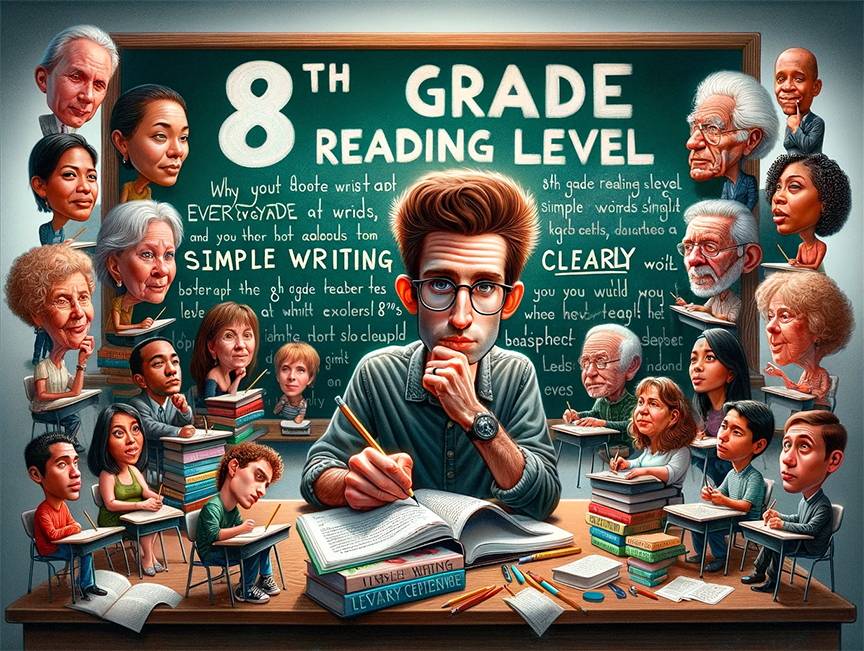
According to the National Assessment of Adult Literacy , around 43% of American adults have basic or below-basic literacy skills.
Writing at an 8th grade reading level is a proven way to capture every type of reader without bias. It’s significant for non-native English speakers , too. Using simpler language and clear explanations helps to overcome learning and language barriers; we make our content more inclusive and comprehensible. Additionally, writing at this level can benefit individuals with reading difficulties or disabilities . A straightforward and concise writing style enhances accessibility and enables everyone to engage effectively with your content.
Research conducted by Nielsen Norman Group found that the average online reader comprehends only about 60% of the content they read.
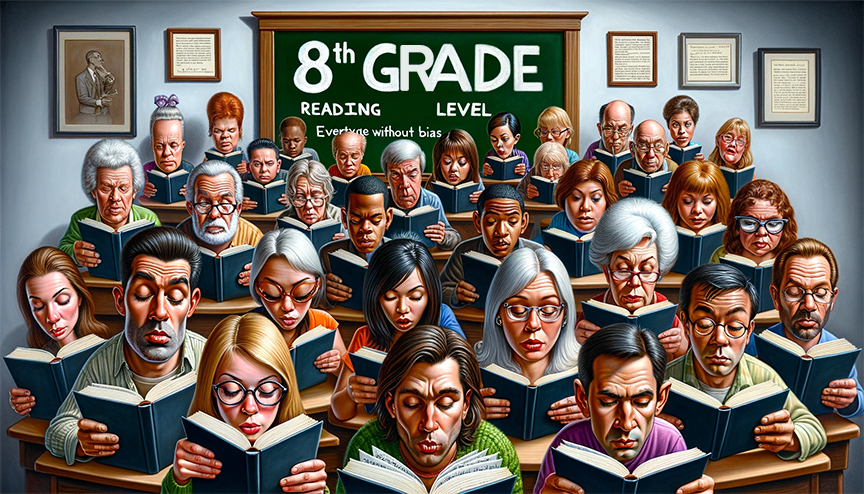
Understanding the 8th Grade Readership Level
Let’s consider some real-world examples to grasp two key points: simplicity and clarity .
- Science Articles Imagine you’re writing a science article about photosynthesis for adult readers. Instead of using complex scientific terms, you could explain it like this: “ Plants make their own food using a process called photosynthesis. They use sunlight, water, and carbon dioxide to create energy and release oxygen .”
- News Articles Let’s say you’re writing a news article about a current event. Instead of lengthy sentences and technical jargon, you could write a clear and concise headline like this: “ New Technology Helps Clean Up Ocean Pollution .”
- Social Media Posts Imagine you’re creating a social media post to engage with a diverse audience. Instead of using complex language and lengthy sentences, you could write a simple and engaging message like this: “📢 Exciting news! Our new store is now open! Come and check out the latest trends and amazing deals. See you there! #GrandOpening #FashionFinds “
- Health and Wellness Blog Suppose you’re writing a blog post about the benefits of exercise. Instead of using technical terms that specialists only know, you could explain it in a relatable way: “ Moving your body through exercise is like giving your heart and muscles a workout. It helps you stay strong, feel energized, and even boosts your mood. So, let’s get active and have some fun! “
- Travel Guide Description Imagine you’re writing a travel guide description for a popular tourist destination. Instead of using complex descriptions, you could write a short, enticing summary like this: “ Welcome to Paradise Island! With its white sandy beaches, crystal-clear waters, and vibrant marine life, this tropical paradise offers a perfect getaway. Enjoy snorkeling, sunbathing, and unforgettable sunsets. “
- Recipe Instructions When providing recipe instructions for a delicious homemade pizza, keep it simple and clear: “ Spread pizza sauce on the dough. Sprinkle cheese and your favorite toppings. Bake at 400°F for 12-15 minutes or until golden brown. Enjoy your homemade pizza! “
- Product Description When describing a new smartphone in a product brochure, focus on key features without overwhelming technical details: “ Introducing our latest smartphone! Enjoy a stunning display, fast performance, and a high-resolution camera that captures beautiful memories. Stay connected and explore the world of apps effortlessly .”
- How-To Guide When writing a how-to guide on assembling a piece of furniture, break it down into easy-to-follow steps: “ Step 1: Lay out all the parts and tools. Step 2: Follow the instruction manual and connect pieces A and B. Step 3: Attach pieces C and D using screws. Repeat for remaining parts. Step 4: Secure the completed sections together. Voila! Your furniture is assembled! “
- Safety Instructions When providing safety instructions for using household appliances, focus on clear and concise guidelines: “ To operate the microwave safely, place food inside, set the desired time, and press start. Always use microwave-safe containers and avoid heating metal objects. Never leave the microwave unattended during use .”
- Event Announcement When announcing a school event in a newsletter, provide essential details in a straightforward manner: “ Save the date! Our school’s annual talent show will take place on Friday, June 15th, at 6:00 PM in the auditorium. Come cheer on your classmates as they showcase their amazing talents! “
In these examples, we use simple language and avoid unnecessary complexity.
The American Press Institute states that most news articles in the United States are written at a 7th- to 8th-grade reading level.
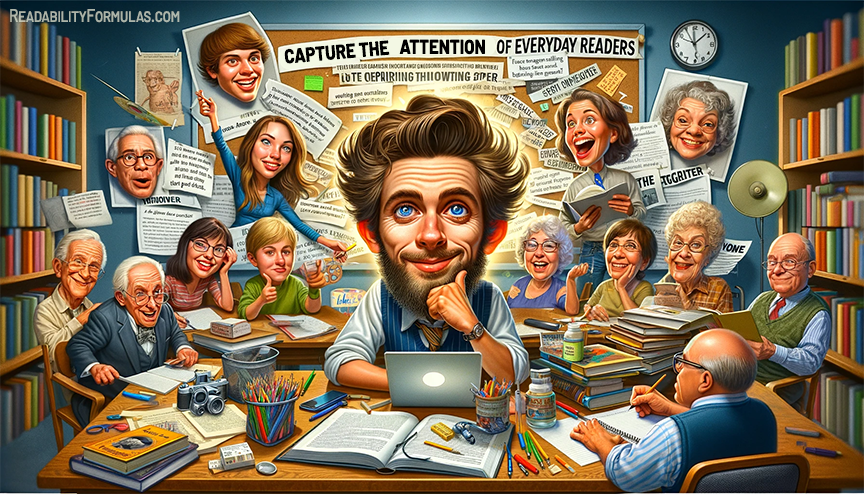
Engaging Readers and Maintaining Interest
To keep everyday readers engaged, we need to know how to capture their attention.
- Captivate : Begin with a captivating introduction. Use a compelling question, an interesting fact, or a relatable anecdote to grab readers’ attention from the start. This sets the tone and makes them eager to continue reading.
- Clear and Concise Language : Use clear and concise language to convey your message effectively. Avoid unnecessary details or complex explanations. Don’t confuse or bore readers. Be direct and get straight to the point. Ensure readers can easily understand your ideas.
- Visual Aids and Multimedia : Use visual aids, such as images, charts, or diagrams. Visual elements help readers visualize concepts, making the information accessible and memorable. Use multimedia elements like videos or interactive content to increase engagement.
- Dissect : Present information in smaller, digestible chunks. Use subheadings, bullet points, or numbered lists to organize your content. Breaking down complex ideas into simpler parts helps readers to follow along and comprehend the information.
- Foster Interaction : Encourage readers to interact with the content. Ask questions, provide opportunities for reflection, or include interactive elements like quizzes or polls. This creates an active reading experience.
A study published in the Journal of Applied Psychology found that employees who receive written instructions at a lower reading level perform better and make fewer errors than those who receive complex instructions.

How to Communicate Complex Ideas Effectively
Don’t overwhelming everyday readers with complex ideas. Here’s how.
- Simplify without Oversimplifying : When presenting complex ideas, strive for simplicity without sacrificing accuracy. Dissect intricate concepts into manageable pieces. Use clear language to explain them. Avoid unnecessary technical terms or jargon; provide relatable examples or comparisons instead.
- Organize Information : Organize your content in a logical and structured manner. Use headings, subheadings, or numbered points to create a clear flow of information. Help readers follow your ideas and grasp the connections between different concepts.
- Use Analogies and Metaphors : Analogies and metaphors can be powerful tools for conveying complex ideas in a relatable way. Compare unfamiliar concepts to familiar ones, making them easier to understand. For example, explaining a computer’s memory as a “virtual filing cabinet” helps readers grasp the concept more easily.
- Provide Context and Background : Before diving into complex ideas, provide readers with the necessary context and background information. Briefly explain the relevant background knowledge. Help readers improve their understanding so they can grasp the complexities of the topic.
- Reinforce Key Points : Repetition and reinforcement are essential for understanding and retention. Summarize key points throughout your writing, emphasizing their importance. Reinforce the main ideas to help readers remember the key takeaways.
A study by Labrador and BVA Group revealed how people feel when they read text written in plain English. They found a clear result: text written simply is more enjoyable to read. They identified four main benefits of using simple language:
- Faster Reading : People can read a 100-word paragraph in simple language in less than 30 seconds–this is 50% faster than more complex text. This was true for 60% of the participants.
- Quicker Understanding : Readers are 38% more likely to understand text in simple language. This approach combines efficiency and clarity, ensuring that reading speed does not impact understanding.
- Improved Message Retention : The study found that 41% more readers retained key information from text written in simple language.
- Clarity : 64% of readers thought text in simple language was well-written. And 34% more people found it well-organized, helping them to engage more easily with the message.

How to Connect with Your Audience
It’s important to build a strong connection with your audience. Here’s how :
- Establish Trust and Credibility : Provide accurate information and reliable sources. Clearly state your expertise or qualifications on the topic. This will build confidence and establish trust, making readers more receptive to your message.
- Understand Readers’ Needs : Put yourself in your readers’ shoes and understand their needs and interests. Consider what information they are seeking and how you can address their questions or concerns.
- Use Relatable Writing : Write in a relatable and conversational tone to engage your readers. Avoid overly formal or technical language. Instead, use everyday language that your readers can easily understand and connect with. This creates a friendly and approachable atmosphere.
- Address Reader Questions : Anticipate and address reader questions within your writing. Think about potential areas of confusion. Provide clear explanations.
- Encourage Interaction : Encourage readers to engage with your content by posing questions or inviting them to share their thoughts. Incorporate opportunities for feedback, comments, or discussion. Make your readers feel valued.
The Plain Language Action and Information Network (PLAIN) reports that 36 million adults in the U.S. have limited reading skills, highlighting the need for clear and simple communication.
Writing for everyday readers is not about dumbing down your writing; it’s about smart writing : cleverly using concise and succinct words that don’t alienate readers or make them struggle to read your message.
Related Articles
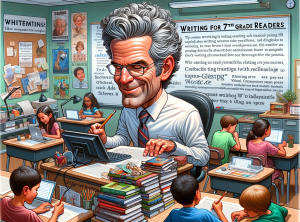
Writing for 7th Grade Readers — Syntactic Stats

Writing for 3rd Grade Readers — Syntactic Stats
You may have missed.

The Coleman-Liau Readability Formula
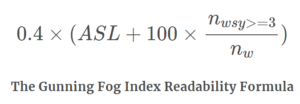
The Gunning Fog Index (or FOG) Readability Formula

Writing Clearer Sentences the Robert Gunning Way
From Paper to Pixels: Adapting Readability for Today’s Tech-Savvy Readers

What are Lexical Density and Lexical Diversity?

Readability vs. SEO: Striking the Perfect Balance for Online Content
8th grade writing
by: Hank Pellissier | Updated: February 12, 2024
Print article

Verbal has a double meaning for eighth grade writing: it refers to the oral presentations the kids will do and to this year’s focus on grammar — gerunds, participles, and infinitives.
Argument essays
Written in formal language, argument essays should start with an introduction that clearly presents the writer’s position and flows into a well-organized, research-backed argument that advocates for their position and argues against opposing claims. Your child’s writing should exhibit a profound understanding of the topic. Arguments should be logical and fueled by evidence from credible sources. Papers should end with a persuasive conclusion that summarizes the viewpoint and declares the topic resolved. Topics will vary, but you’ll often see teen issues such as: Are video games harmful to mental health? Should our school have uniforms? Should bullies be suspended or given a chance to make amends?
Informative and explanatory writing
In their informative and explanatory papers , students use formal language to explain complex topics with relevant data, precise ideas, and logical analyses. Kids should start with an intriguing introduction that previews the subject matter. Next, they present well-organized information that’s backed by evidence from credible sources. Eighth graders should use a variety of “strategy tools,” including:
- Classifying information.
- Defining terms.
- Using subject-specific, academic , and transition vocabulary words.
- Quoting sources.
- Incorporating factual details.
- Making comparisons.
- Contrasting different situations.
- Explaining cause-and-effect relationships.
- Including graphics (charts, tables, images) and multimedia.
- Using formatting (headings, bullet points).
Finally, the concluding paragraph should provide a synopsis of the main point of the essay. Your child’s papers are likely to cover topics that students are familiar with — but still need to research in order to answer, like If there is a drought, how can we save water? Or Explain how a specific invention has changed your life .
Narrative writing
Eighth graders write narratives or stories that describe events in their lives (personal histories, memoirs) or imagined scenarios (fiction, fantasy). Junior J.K. Rowlings learn effective storytelling techniques, such as introducing the narrator and characters, establishing context for the setting, and conveying a point of view. Students practice letting the sequence of events unfold, giving characters depth, and developing the plot through actions, dialogue, and reflection. Your future F. Scott Fitzgerald should use transition words to guide readers from one place and time to another. For example: Four hours later, Jack opened his locker to discover a shocking surprise . Or, Returning to the cafeteria, Tinsley saw the cute new boy sitting with her best friend, Amanda . Remember that even narratives have a conclusion, hopefully one that helps readers ponder the meaning of the story.
Changes and more changes
Grit. Concentration. Determination. Eighth graders strengthen their literary skills by revising their papers over and over again, following advice from teachers and classmates to re-imagine, re-outline, redraft, re-edit, rewrite, and try new approaches. Is this just a form of perfectionistic punishment? No, the practice helps teens learn to tighten their prose, pick stronger verbs, use more accurate descriptors, and organize their writing in the most effective and interesting ways.
Internet interaction
Your eighth grader will likely need the internet to create, type, and share their work, which will often have links to web sources and include graphics and multimedia. Also, these are typically typed. Your child should be tying about 40 words per minute. (Wisconsin’s Department of Public Instruction recommends a typing speed 5 times your grade . If your child needs practice, there are free typing classes for middle schoolers available online .)
It’s increasingly common for kids to be required to collaborate on projects online, often in Google Docs or Slides. What’s more, drafts and completed assignments are often turned in via email or by uploading to an online portal. So if your child’s technical skills aren’t up to snuff, think about getting your child a little extra help so these requirements don’t hold him back.
Evaluating their sources
Eighth graders do short projects that require research from multiple sources. Teens learn to evaluate the credibility of their sources. For example, Is Saturday Night Live as reliable as National Public Radio? No. Kids need to be careful about how they present information, paraphrasing information or using quotes to avoid plagiarizing, which Merriam-Webster defines as “to use the words or ideas of another person as if they were your own words or ideas.” The standard way to end all research projects? A bibliography, formatted correctly, of course, that shows both the quality and quantity of their sources.
Student critiques
Students get to do the critiquing this year — whether it’s a book or their classmate’s essay. Eighth graders analyze how modern fiction uses the plot, themes, and characters. Students look for connections and explain how a contemporary text borrows from, comments on, or changes the old foundation. For example, How does The Hunger Games trilogy use the Greek myth of Theseus and the Minotaur?
Students also evaluate the evidence their peers use in essays and to back up arguments. It helps them become more skilled at determining fact from fiction, legitimate truth from biased propaganda, scientific theories from fraudulent nonsense.
Eighth graders learn to identify verb voice. If the subject in a sentence does the action, then the verb is in the active voice, like this: The whale ate the shrimp. However, if the subject in a sentence is the target of the action, then the verb is in the passive voice, like this: The shrimp was eaten by the whale .
Presenting their work
Expect quite a few oral reports in eighth grade. In these presentations, kids need to deliver their arguments and the results of their investigations to the class. Key skills for a solid presentation include:
- using formal language;
- making eye contact;
- pronouncing things clearly and loudly enough for all to hear.
Your child’s presentations should be coherent, organized, logical, supported by evidence, and, in many cases, jazzed up with costumes, props, maps, music, sound effects, charts, and visual projection. Teens (and adults) often suffer from sweaty, knee-knocking stage fright. Inform your adolescent that this is totally normal; remind them to breathe and enjoy the attention.
Here’s a preview of the presentation skills required in high school.

Homes Nearby
Homes for rent and sale near schools

6 ways to improve a college essay

Quick writing tips for every age

Writing on the wall
Why parents must teach writing
Yes! Sign me up for updates relevant to my child's grade.
Please enter a valid email address
Thank you for signing up!
Server Issue: Please try again later. Sorry for the inconvenience

How To Improve Writing In Eighth Grade
Written by Dan
Last updated January 31, 2024
Improving writing skills is crucial for students in eighth grade. This is when students are transitioning from middle school to high school, and they need to have a solid foundation in writing to succeed in high school.
Writing is a vital skill in almost every aspect of life, and students need to learn how to write well at an early age.
Related : For more, check out our article on How To Make Writing Fun here.

Understanding the basics of writing is the first step towards improving writing skills. Students need to learn the fundamentals of grammar, punctuation, and sentence structure.
They also need to understand the different types of writing, such as persuasive, narrative, and informative writing. By mastering the basics, students can develop a strong foundation to help them in future writing projects.
Improving research and fact-checking skills is also essential for students in eighth grade .
Writing often involves research, and students need to know how to find reliable sources and how to fact-check their information. Developing good research skills will help students write more accurate and informative pieces.
Table of Contents
Key Takeaways
- Understanding the basics of writing is crucial for improving writing skills.
- Developing good research and fact-checking skills is important for accurate and informative writing.
- Practicing writing projects and revising and editing techniques can help students improve their writing skills.
Related : For more, check out our article on How To Improve Writing In Sixth Grade here.
Understanding the Basics of Writing

Writing is a fundamental skill that every student must learn to master. In eighth grade , students are expected to have a solid foundation in writing, which includes understanding the basics of writing.
This section will cover the essential elements of writing that students must be familiar with to improve their writing skills.
Grammar and Formal Language
Grammar and formal language are critical aspects of writing. Students must have a good grasp of grammar rules and the appropriate use of formal language.
This includes understanding sentence structure, punctuation, and capitalization. Students must also be aware of the different types of sentence structures, such as simple, compound, and complex sentences.
Word Choice and Figurative Language
Word choice and figurative language are essential in writing. Students must choose their words carefully to convey their message effectively.
They must also be familiar with the different types of figurative language, such as similes, metaphors, analogies, and allusions, and know how to use them appropriately.
Narrative and Theme Development
Narrative and theme development are crucial in writing . Students must clearly understand the elements of a narrative, such as setting, plot, characters, and dialogue.
They must also know how to develop a theme and how to convey it effectively throughout their writing.
In conclusion, understanding the basics of writing is essential for eighth-grade students to improve their writing skills. By mastering grammar and formal language, word choice and figurative language, and narrative and theme development, students can elevate their writing to the next level.
Related : For more, check out our article on How To Improve Writing In Fifth Grade here.
Improving Research and Fact-Checking Skills
Eighth-grade students are often required to complete research projects that require them to gather information from multiple sources. To improve their writing skills, students need to learn how to identify credible sources, incorporate evidence and data, and cite sources correctly.
Identifying Credible Sources
The internet is an excellent resource for research, but it is crucial to be able to distinguish credible sources from unreliable ones.
Students should look for sources written by an author with expertise in the field, contain facts and details that can be verified, and are published by a reputable organization. It is also important to consider the source’s bias and whether it presents a balanced view of the topic.
Incorporating Evidence and Data
Students should incorporate evidence and data from credible sources to support their arguments. They should look for graphs, charts, and other visual aids that can help to convey information.
When using evidence, students should make sure that it is relevant to their topic and explain how it supports their argument.
Citing Sources Correctly
To avoid plagiarism, students must cite their sources correctly. They should use a bibliography to list all of the sources they used in their research and in-text citations to credit the source’s author.
Students should use a citation style that is appropriate for their subject, such as MLA or APA.
Eighth-grade students can become more confident and knowledgeable writers by improving their research and fact-checking skills.
They will be able to gather accurate information, incorporate evidence and data, and cite their sources correctly, which will help them to write more persuasive and effective research projects.
Related : For more, check out our article on How To Teach Children To Add Suspense To Their Writing here.
Developing Writing Projects

Eighth-grade students can develop their writing skills by working on various writing projects. These projects can help them improve their writing skills and explore different writing genres. Here are some types of writing projects that can be helpful:
Writing Prompts and Creative Writing
Writing prompts can be a great way to get students started on a writing project. These prompts can be used to spark creativity and help students develop their writing skills.
Creative writing projects can include short stories, poems, and scripts. Students can use their imagination and creativity to produce original pieces of writing.
Writing Essays and Biographies
Writing essays and biographies can help students develop their research and writing skills. Essays can be used to explore a particular topic or issue, while biographies can be used to explore a particular person’s life.
Students can learn how to research a topic, analyze information, and present their findings clearly and concisely.
Scientific and Literature Writing
Scientific and literature writing can help students develop their analytical and critical thinking skills . Scientific writing can include lab reports, research papers, and scientific articles.
Literature writing can include book reviews, character analyses, and critical essays. Students can learn how to analyze and interpret data, as well as develop their writing skills.
When developing writing projects, it is important to consider the project’s audience, purpose, and format. Students should also consider using graphics and multimedia to enhance their projects.
Formatting and transition words can also make the writing clearer and more concise.
Overall, eighth-grade students can improve their writing skills by working on various writing projects.
By following these tips and advice, students can produce high-quality writing projects and develop their writing skills. Google Docs and Slides can be used to produce and share these writing projects.
Revising and Editing Techniques
Self-Editing Strategies
One of the best ways to improve writing skills is by self-editing. Eighth graders can use various self-editing strategies to improve their writing. First, they should read their work aloud to identify areas that need revision.
This technique helps them identify incomplete sentences, awkward phrasing, and other mistakes. They should also check their work for the main idea and ensure that their writing is well-organized with clear connections between ideas.
Second, students should look for passive voice and replace it with active voice. This technique helps to make the writing more engaging and interesting.
They should also avoid using repetitive words and phrases. Instead, they should use synonyms or rephrase sentences to make their writing more interesting.
Peer Feedback and Review
Another technique for improving writing in eighth grade is by getting feedback from peers. Students can form small groups and review each other’s work.
This technique helps them to identify areas that need improvement and provides an opportunity to learn from their peers. They should also provide constructive feedback to their peers.
When providing feedback, students should focus on the content, organization, and clarity of the writing. They should also check for spelling and grammar mistakes. Peer feedback and review help students to become better writers and improve their writing skills.
Utilizing Technology for Revision
Eighth graders can also use technology to improve their writing skills. There are many interactive worksheets and printable worksheets available online that provide instant feedback.
These worksheets are designed to help students practice writing and improve their skills.
Another way to utilize technology is by using online tools that provide direct links to writing resources. For example, students can use online tools that provide access to music that can help them focus and stay motivated while writing. They can also use online tools that provide access to writing prompts and exercises.
Overall, revising and editing techniques are crucial for improving eighth-grade writing skills. Students should use self-editing strategies, peer feedback and review, and utilize technology to improve their writing skills.
By doing so, they can become better writers and achieve success in their academic and professional lives.
Application and Practice

Writing in Different Contexts
Eighth-grade students need to learn how to write in different contexts, such as persuasive essays, informative essays, and narratives. They should also be able to write in different styles, such as formal and informal.
Teachers can give students examples of different writing styles and formats to help them understand the differences. Students can also practice writing in different contexts by choosing a topic and writing a short piece in each style.
Oral Presentations and Discussions
Writing is not just about putting words on paper, but also about communicating ideas effectively. In eighth grade, students should practice presenting their ideas orally and engaging in discussions.
Teachers can assign oral presentations and discussions on different topics to help students develop their communication skills. Students can also practice their presentation skills by recording themselves and watching the playback to identify areas for improvement.
Making Inferences and Drawing Conclusions
Eighth-grade students should be able to make inferences and draw conclusions from texts they read. They should be able to identify the main idea, supporting details, and author’s point of view.
Teachers can provide students with texts and ask them to identify the main idea, supporting details, and author’s point of view. Students can also practice making inferences and drawing conclusions by analyzing quotes and themes from books they read.
Overall, practicing writing in different contexts, engaging in oral presentations and discussions, and making inferences and drawing conclusions are important skills for eighth-grade students to develop.
These skills align with the Common Core State Standards and will help students succeed in high school and beyond.
Related Posts
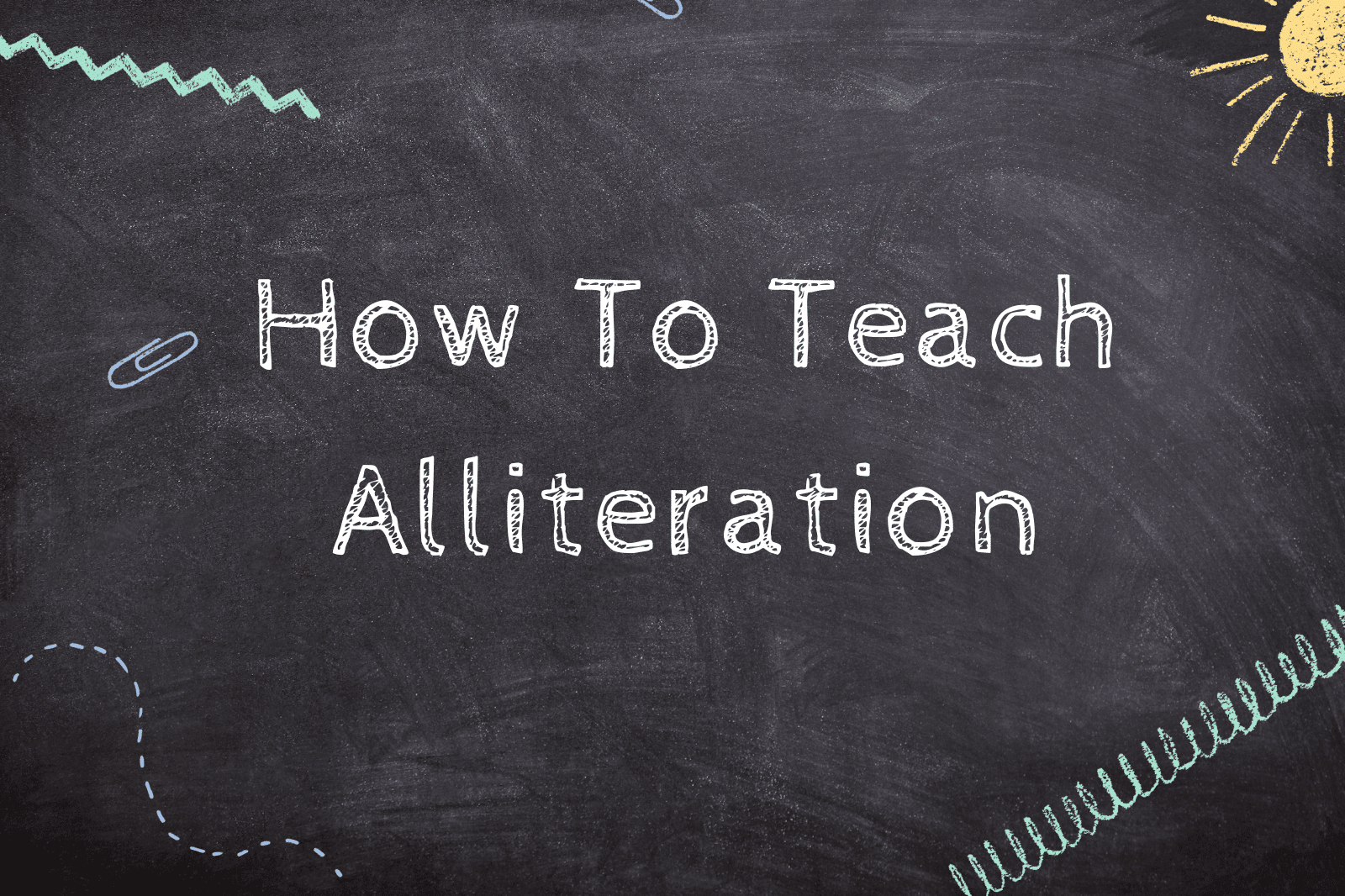
About The Author
I'm Dan Higgins, one of the faces behind The Teaching Couple. With 15 years in the education sector and a decade as a teacher, I've witnessed the highs and lows of school life. Over the years, my passion for supporting fellow teachers and making school more bearable has grown. The Teaching Couple is my platform to share strategies, tips, and insights from my journey. Together, we can shape a better school experience for all.

Join our email list to receive the latest updates.
Add your form here
How to Write for an Eighth-Grade Reading Level
When writing documentation, marketing content, or training materials, keeping the audience in mind is an important step in producing effective content.
Sometimes, you may be asked to limit your writing to a specific reading level so it’s accessible to a broad range of users.
You can monitor the reading level of a document by turning on the readability statistics option in the proofing settings of Microsoft Word. This activates the Flesch-Kincaid Grade Level measurement, which calculates the number of years of education needed to comprehend the text.
Here are some tips on how to write for an eighth-grade reading level:
Keep It Simple
Remember that everyone has a different vocabulary base. As often as possible, replace complex words with simpler ones. For example, write “use” instead of “utilize” or “start” instead of “commence.”
A good sign that a word may need to be replaced is a high number of syllables in it. One-syllable words are ideal, and you should try to keep all words to no more than three syllables. However, don’t sacrifice clarity during this process. If the new word alters the meaning of the sentence, then you should avoid changing it.
Keep It Short
Another way to reduce the reading level of your writing is to shorten the length of your sentences. If you have a lot of compound or complex sentences, break them up into several shorter ones. You can also eliminate unnecessary words.
For example, “Mentally imagine someone who is playing the game of tennis” could be simplified to, “Imagine someone playing tennis.” You can also turn sentences into bulleted lists, which are useful in clearly presenting key points. In addition to adjusting sentence length, find ways to split your writing into manageable “chunks.” If doing so doesn’t interrupt the flow of the content, break a paragraph of eight sentences into two paragraphs of four sentences.
Keep It Clear
There are other ways to make your writing easier to understand that aren’t calculated with the Flesch-Kincaid Grade Level measurement. Provide concrete examples for abstract ideas. Insert graphs or pictures that explain difficult concepts or contribute to the learner’s understanding of the text.
Writing for a reduced reading level requires precision. Take your time, and ensure that even with the simple language, you’re still conveying the right message.
To learn more about writing audience-specific documentation, contact us today!
Share this:
Leave a reply cancel reply, discover more from proedit.
Subscribe now to keep reading and get access to the full archive.
Type your email…
Continue reading
- Words with Friends Cheat
- Wordle Solver
- Word Unscrambler
- Scrabble Dictionary
- Anagram Solver
- Wordscapes Answers
Make Our Dictionary Yours
Sign up for our weekly newsletters and get:
- Grammar and writing tips
- Fun language articles
- #WordOfTheDay and quizzes
By signing in, you agree to our Terms and Conditions and Privacy Policy .
We'll see you in your inbox soon.
100 Interesting 8th Grade Writing Prompts

- DESCRIPTION Middle schoolers in class writing
- SOURCE FatCamera / iStock / Getty Images Plus
To capture the attention of older students and inspire them to write longer and more in-depth pieces, 8th grade writing prompts need to be interesting and fun. These exciting prompts will help them get started writing everything from informational essays to journals, and even reluctant writers will enjoy the process.
8th Grade Journal Writing Prompts
In 8th grade, daily or weekly journal writing can help kids stay in practice as writers. It's also a great way to provide flexibility in topic and style, which can encourage young writers to think creatively. These prompts will get them writing:
- Imagine you could go back in time and give some advice to someone. What would you say? How would it change things?
- Pick an older relative, like a grandparent. What is the most important lesson you've learned from that person? Did he or she use any unconventional methods to teach you?
- What do you regret in your life so far? Why do you regret it?
- Have you ever had a friend or family member who was struggling with a physical or mental problem? What did you think about that struggle?
- Do people need a purpose in life? How do you think that purpose changes over time?
- What do you think of the concept of vulnerability? When have you felt vulnerable? Do you think there is strength in being vulnerable?
- What do you like about your physical appearance?
- Think about what you value in life and how it relates to where you want to be in five years. Write a personal vision statement for your life and explain why this matters to you.
- If you could visit any place in the world, where would you go? Why did you choose that spot?
- How do you feel about writing? Compare your feelings about writing to something else in your life.
Informational Writing Prompts for 8th Graders
Informational writing is a major focus in 8th grade. It's important to include topics that require some research, as well as topics that kids can complete in one sitting. Either way, the subject needs to be interesting:
- Ask your teacher for some facts about his or her life. Then, write a one-page biography based on what you learn.
- What is something you know how to do really well, such as playing a musical instrument, making something creative, or helping with a household task? Write directions for someone else to do this activity.
- Interview an older relative about life when they were a child. How were things different? How did they spend a typical day? Write about three pages to describe that person's life.
- Write a news article describing something that happened at your school this month.
- Think about some place you've been. It can be anything from a national park to a pizza shop in town. Describe the place to someone who hasn't been there before.
- There are many different family structures. How is your family structured?
- Pick a topic you already know a lot about, such as a favorite sports team, a movie star, a type of music, or something else that fascinates you. Write three pages explaining the topic to someone else.
- How has technology changed during your lifetime?
- Is there a tradition that is unique to your family? Describe that tradition and why your family engages in it.
- Describe a typical day in one of your parents' lives.
8th Grade Narrative Writing Prompts
A Common Core Standard for 8th grade , narrative writing is a major focus for this age group. These fun prompts will help students work on developing story settings , offering context, perfecting dialogue, and more:
- People make small choices every day that define whether it will be a good day or a bad one. Think of a time you made a choice. Describe the choice and how it affected the rest of your day.
- Imagine a meal where no one used table manners. What would it be like?
- Have you ever had a really weird dream? What happened in it?
- Write a bedtime story for a child you know.
- A watershed event is something that happens and totally changes someone's life. Things are one way before the event, and everything is different after it happens. Describe a watershed event in your life.
- Pick a moment in history. Write a short story about someone living through that moment.
- Imagine a deathbed conversation between two people who haven't always had an easy relationship. One of the people betrayed the other years ago.
- What is one of the funniest things that has happened to you or someone in your family?
- Is there a real or fictional story one of your grandparents has told you? Write it down.
- Imagine a child is visiting a botanical garden with her family. She wanders off and gets lost in a hedge maze. What happens?
Opinion Writing Ideas for 8th Graders
Opinion writing is another part of the language arts Common Core for this age group. Prompts should inspire students to make claims, support those claims, and logically organize their work:
- Do you think it's harder to be a boy or a girl your age? Why?
- Do you think the internet brings people together or drives them apart? What makes you think this?
- Can people really fall in love at first sight? Why or why not?
- The decisions parents make can have a huge impact on the lives of their children. Is this the most important thing parents should consider when making a decision? Why or why not?
- What does it mean to be emotionally strong? How is this different than physical strength?
- Do you think bullying is always obvious? What are some solutions to less obvious types of bullying?
- What does the world need to do differently to solve the crisis of climate change? What should students do to help?
- If you could give a piece of advice to a 5th grader, what would you say? Why is it important?
- People share things online that are false. How can people tell the difference between something that is true and something that is false when they see it?
- Think of a type of self-expression, whether it's fashion, tattoos, hair color, language, or something else. Is this type of self-expression important? Why or why not?
8th Grade Counter-Argument Writing Prompts
Part of opinion writing also involves identifying or making a counter-argument. This helps students become logical thinkers and facilitates more compelling work. The following prompts will help them formulate a counter-argument:
- Some people think students should not have access to smartphones in school because they are a distraction. Write an argument in favor of allowing phone use in school.
- There are people who believe nothing is more important than fame or popularity. Why do you disagree?
- Freedom of expression means being free to share your beliefs in public. Some people think there should be no limits to freedom of expression. Explain why freedom of expression should be limited in some situations.
- Cat people think cats make the best pets. Explain why dogs might be better.
- Paranormal investigators sometimes use photographs as "proof" ghosts exist. Explain why a photo of a ghost might not be proof.
- In some schools, kids have to wear uniforms every day to minimize bullying and keep the focus on learning. Explain why you disagree with this policy.
- Sometimes, people believe that good friends need to agree on important core values like religion and politics. Tell why this might not be so important.
- An old saying goes, "Early to bed, early to rise, makes a man healthy, wealthy, and wise." Explain why this might not be true.
- Some people think honesty is more important than kindness. Write about why kindness is more important sometimes.
- People sometimes say that crying is a sign of weakness. Explain why you disagree.
Expository Writing Prompts for 8th Graders
General expository writing prompts help 8th graders learn to organize information, create clear and compelling descriptions, and share details in a logical way. These prompts, each designed for about one page of writing, will help them practice these important skills:
- What unique qualities does your generation have? How are people your age different than your parents or grandparents?
- What is your earliest memory?
- Think of a job you'd like to do someday. Describe a typical day in that job.
- Describe the typical school lunch and the experience of eating in the lunchroom.
- Imagine your dream home. Write a description of each room.
- There's a Christmas song about going "over the river and through the woods" to get to Grandmother's house. How do you get to your grandparents' house or the home of another relative?
- Describe your last birthday, from the moment you woke up until you went to bed that night.
- What is the weirdest place you've ever been? Describe it.
- Summarize the plot of your favorite book or movie to someone who has never read or seen it. Include a spoiler alert.
- What are three ways your family could spend a weekend and have fun together?
Precise Language Writing Prompts for 8th Graders
One element of the Common Core Standards for this age group involves the use of precise language. 8th graders have larger vocabularies and more options than younger students when it comes to word choice, but they may not have much experience choosing the perfect words . These prompts can help:
- How is being wise different from being smart?
- How are race and nationality different?
- How is something "made from natural ingredients" different from something grown in your garden?
- Is a "young person" exactly the same as an 8th grader? Why or why not?
- How is a sound different than music?
- Is a president always the same as a leader?
- Are all educators teachers? Are all teachers educators? Why or why not?
- Why would you describe something as "antique" instead of calling it "old"?
- What is the difference between baked goods, cake, and brownies?
- When is it better to say an exact number instead of "a lot"?
8th Grade Research Writing Prompts
Writing a research paper is a major goal for this age group, but research requires a kind of sustained attention students may not have practiced a lot. These prompts will inspire them to look for answers, form conclusions, and write short or long essays to describe their findings:
- Pick an invention that has changed the world. Research the person who invented it and the story of its invention. Write a paper explaining what you discover.
- Think of a colloquial phrase or idiom in your language, something people say all the time that has a different meaning. Examples might be "dead as a door nail," "raining cats and dogs," or "jump the shark." Look up the origin of this saying and explain where it came from.
- Pick a time period. Research that time to find out what a typical day was like for a person your age.
- Some people have special gifts and challenges. Do you know someone who thinks in a different way? Find out as much as you can about this way of thinking and describe it in your paper.
- Look up the sinking of the Titanic. How could it have been avoided?
- Which planets do we know that might be similar to Earth? Could humans live on them?
- Pick an author you love. Write about that author's life.
- Interview a relative about your family history. How many generations back can you go? What do you know about your ancestors?
- Are you allergic to anything? Do you know someone with allergies? Find out what doctors know about allergies.
- Think of a skill no one uses very often these days, such as navigating with a compass or repairing a sock. Find out how it was done and write instructions.
Sensory Language Writing Prompts for 8th Graders
The Common Core Standards for 8th grade also call for using sensory language in writing. Whether students are writing poetry , creating personal narratives, or just exploring a theme, these prompts will help:
- Think of your favorite food. Is it sweet? Salty? Write a page describing that food to your classmates without ever naming the food.
- Close your eyes for five minutes. Then, open them and describe what you heard.
- Some writers believe smell, touch, and taste are the most powerful senses to describe because they are less likely to be shared by more than one character. Pick one of these three senses and write about an experience you had this week using details from that sense.
- Write about a character who is angry without ever saying that person is angry or mad. How does the character act that shows his or her anger?
- Describe something that really stinks.
- Think of your favorite memory. How did you experience that time using all of your senses?
- Describe a fruit by never mentioning how it tastes.
- Imagine you have lost one of your senses. Describe your day without it.
- How does it feel to laugh? How does it feel to cry?
- When have you been speechless? Use words to describe the feeling, trying to include as many senses as you can.
Write-to-an-Audience Prompts for 8th Graders
Eighth graders are just beginning to write for an audience, rather than simply writing to fulfill a teacher's expectations. These prompts will help them identify a reader or audience and adapt their writing to fit the needs of that group:
- Describe your bedroom at home to someone who lives in a foreign country.
- Imagine your life 10 years from now. Write a letter to your older self.
- Imagine someone who has just been tripped in the hallway by a bully. Tell that person what he or she should do the next time the bully tries to do that.
- Write a letter to a friend who has just lost a pet.
- Pick one thing you'd like to change in your school. Write a letter to your principal about it.
- Imagine a new student has just joined your class. Offer lots of tips to help get through the first day.
- Write one paragraph about your morning, thinking of your best friend as the person who will read it. Then, write another paragraph about your morning that your principal will read.
- What are three things you know to be true about life? Write some advice for a younger sibling, cousin, or friend.
- Write a paragraph introducing your teacher to a new student. Now, write a paragraph introducing your teacher to the president or prime minister.
- Explain how to use a cell phone to someone who has never seen one before.
Writing Prompt Worksheets for 8th Grade
These writing prompt worksheets will help kids get started with their writing. These exercises are fun and interesting - even for reluctant writers. Download and print them for your own students.
Help Them Practice What They Learn
In addition to giving kids the skills they need to express themselves well, writing is a great way to teach other language arts concepts like spelling , vocabulary, grammar , and more. The more kids practice what they learn in 8th grade, the better prepared they are to move on to high school writing.
Reading Worksheets, Spelling, Grammar, Comprehension, Lesson Plans
8th Grade Writing
For eighth graders, this Common Core area helps students gain mastery of writing skills by working collaboratively and producing written texts, understanding syntax and vocabulary, and organizing their ideas. Among the complete standards for this grade, eighth graders will be asked to: support the claims of their arguments with evidence, logical reasoning, and credible sources, use a formal style when writing, be able to develop the topic of a work with details, facts, definitions, and quotations, employ formatting, graphics, and multimedia to present information in the written medium, employ narrative techniques like pacing, description, reflection, and dialogue to develop events and characters within a text, go through the process of writing, editing and revision for their written work, use appropriate technology to publish writing and to collaborate on written projects, demonstrate keyboarding skill, go through the process of writing, editing and revision for their written work, conduct short research projects to answer a question, quote or paraphrase the data and conclusions of supporting texts while avoiding plagiarism and using proper citation, use evidence from literary or informational texts to support analysis, reflection, and research.
Abraham Lincoln Bio Poem
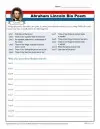
Your students will write a bio poem about Abraham Lincoln.
Bio Poem: My Mother
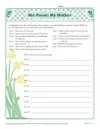
A fun Mother’s Day bio poem activity for your students!
Bio Poem: Pilgrim
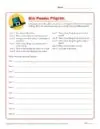
A biography poem, also called a bio poem, is a short poem which describes a person or thing. This printable Thanksgiving Activity guides students through creating a bio poem about Pilgrims.
Bio Poem: Someone You Know
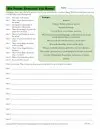
Students will write a bio poem about someone they know using the format set in this worksheet.
Christmas Tree Bio Poem
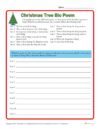
A biography poem, also called a bio poem, is a short poem which describes a person or thing. Sometimes writing a bio pem can be tricky! This printable Christmas Activity guides students through creating a bio poem about a Christmas tree.
Correct the Transition Words Mistakes – Worksheet
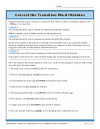
Have your students revise sentences and correct transition word mistakes with this educational writing activity.
Edgar Allan Poe: Secrets in Poetry
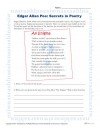
Students read from Edgar Allan Poe’s “An Enigma” and decipher the name of the woman’s whose name is hidden within the text.
Father’s Day Bio Poem: My Father
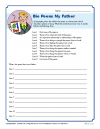
Enhance your students’ writing skills with this fun Father’s Day Biography Poem activity.
Fourth of July Bio Poem: America
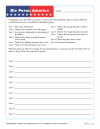
Encourage your students to learn about America with this Fourth of July Biography Poem activity.
George Washington Bio Poem
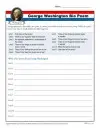
Your students will write a bio poem about George Washington.
George Washington’s List of Rules
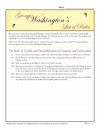
When George Washington was a young boy, he made a list of rules for himself. Students choose one of the rules and write what it means.
Halloween Bio Poem Activity: Ghost
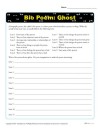
Create a bio poem about your own personal ghost with our fun Halloween printable activity!
Main Idea Organizer
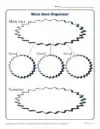
Teach your students how to organize their writing with this helpful Main Idea Organizer. Students will be asked to complete the worksheet by writing their own main idea, three details, and a summary. This will help your students better understand how to organize their ideas for writing in the future, especially when writing an essay!
Write a Biography Poem
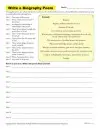
Bio poems are usually short poems following a specific format. In this worksheet students will write a bio poem about themself.
Bio Poem: A President
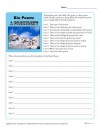
Bio poems are usually short poems following a specific format. Students will write about a President in this worksheet.
Bio Poem: An Ocean
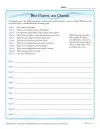
Have your students get creative by writing a bio poem about an ocean.
Editing and Proofing a Paragraph
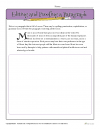
Your students will further their editing and proofing skills by correcting a paragraph in this printable classroom worksheet.
George Washington: Almost a King

What if George Washington had become king? Students ponder this question and then write about what it would be like.
How to Write a Thesis Statement
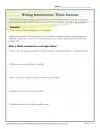
This activity helps students develop a strong thesis statement for their essays by providing practice writing sample statements.
How to Write an Introduction: Bridge Building Activity
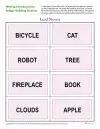
This activity is designed to help students learn about writing introductions through a fun bridge building activity to join the lead noun card and thesis statement card.
- Condition of Education Digest of Education Statistics Projections of Education Statistics Topical Studies
- National Assessment of Educational Progress (NAEP) Program for the International Assessment of Adult Competencies (PIAAC)
- International Activities Program (IAP)
- Early Childhood Longitudinal Study (ECLS) National Household Education Survey (NHES)
- Common Core of Data (CCD) Secondary Longitudinal Studies Program Education Demographic and Geographic Estimates (EDGE) National Teacher and Principal Survey (NTPS) more...
- Library Statistics Program
- Baccalaureate and Beyond (B&B) Career/Technical Education Statistics (CTES) Integrated Postsecondary Education Data System (IPEDS) National Postsecondary Student Aid Study (NPSAS) more...
- Common Education Data Standards (CEDS) National Forum on Education Statistics Statewide Longitudinal Data Systems Grant Program - (SLDS) more...
- Distance Learning Dataset Training National Postsecondary Education Cooperative (NPEC) Statistical Standards Program more...
- Assessments K-12 Students K-12 Teachers and Faculty K-12 Schools College Students College Faculty College Institutions Mapping
- Delta Cost Project IPEDS Data Center How to apply for Restricted Use License Online Codebook
- ACS-ED Tables Data Lab Elementary Secondary Information System International Data Explorer IPEDS Data Center NAEP Data Explorer
- ACS Dashboard College Navigator Private Schools Public School Districts Public Schools Search for Schools and Colleges
- NAEP State Profiles (nationsreportcard.gov) Public School District Finance Peer Search Education Finance Statistics Center IPEDS Data Center
- NAEP Question Tool NAAL Questions Tool
- ACS-ED Dashboard ACS-ED Maps Locale Lookup MapEd SAFEMap School and District Navigator
- Bibliography ED Data Inventory
- Assessments Early Childhood Elementary and Secondary Postsecondary and Beyond Resources Special Topics
- Search for Schools and Colleges College Navigator Other Search Tools Public Schools Public School Districts Private Schools
- NCES Blog What's New at NCES Conferences/Training NewsFlash Funding Opportunities Press Releases StatChat
- Search Publications and Products Annual Reports Restricted-use Data Licenses Recent Publications By Subject Index A-Z By Survey & Program Areas Data Products Last 6 Months
- About NCES Commissioner Contact NCES Staff Help
Explore NAEP results! By clicking "continue" you will be leaving the National Assessment of Educational Progress (NAEP) operational website and opening The Nation's Report Card (NRC) website. Explore NAEP results about students' performance, and access a suite of data tools.
The National Assessment of Educational Progress (NAEP) writing assessment measures how well America’s students can write—one of the most important skills that students acquire and develop during K-12 schooling. Since 2011, students participating in NAEP writing assessments have been required to compose and type their responses on a digital writing device. In 2011, students at grades 8 and 12 completed the assessment on laptops. In 2017, students at grades 4 and 8 used tablets to record their responses to NAEP writing assessment tasks.
Explore the Nation's Report Card
Preliminary analyses of students’ writing performance in the 2017 NAEP writing assessments at grades 4 and 8 revealed potentially confounding factors in measuring performance.
Assessment Content
The 2011 writing assessment was the first NAEP writing computer-based assessment (WCBA) and was developed under a new framework assessing writing. This framework recognizes the significant role that computers play in the writing process and organizes writing content into three communication categories: to persuade, in order to change the reader’s point of view or affect the reader’s action; to explain, in order to expand the reader’s understanding; and to convey experience (real or imagined), in order to communicate individual and imagined experiences to others. The framework also outlines what writing knowledge and skills students should have to reach Basic, Proficient, and Advanced achievement. The assessment is administered as a digitally based assessment. Survey questionnaires, administered to students, teachers, and school administrators who participate in a writing assessment, are used to collect and report contextual information about students’ K-12 education and learning experience in and out of the classroom.

How is Your State or District Performing?

How Results Are Reported
Academic achievement in writing is presented in two ways on The Nation's Report Card: scale scores and NAEP achievement levels.
- Scale scores represent how students performed on the writing assessment. Scores are aggregated and reported for diverse student groups for the nation, states, and districts.
- NAEP achievement levels are performance standards that describe what students should know and be able to do.
Results are reported as percentages of students performing at or above three NAEP achievement levels ( NAEP Basic , NAEP Proficient , and NAEP Advanced ). Students performing at or above the NAEP Proficient level on NAEP assessments demonstrate solid academic performance and competency over challenging subject matter. It should be noted that the NAEP Proficient achievement level does not represent grade level proficiency as determined by other assessment standards (e.g., state or district assessments).
Item maps illustrate how specific writing knowledge and skills correspond to different NAEP achievement levels. Item maps answer the question, "What does it mean for students to be at NAEP Basic , NAEP Proficient , or NAEP Advanced in terms of what they know and can do?"

Writing Publications

- Publications
- IES Centers
- Data Training
- School Search
- IES Policies and Standards
- ED Data Inventory
- IES Diversity Statement
- NCES Statistical Standards
- Peer Review Process
- Privacy and Security Policies
- Public Access Policy
- U.S. Department of Education
- Additional Resources
- Organizational Chart
Readability Calculator
Enter your text and click the Calculate Readability button!
Check the readability score of your text
With our free readability checker you can instantly calculate how easily your intended audience will be able to read your written content.
What readability tests does this tool score your text on?
This automatically gives your text the score for the following 8 readability metrics:
Flesch-Kincaid Reading Ease
Higher scores in this test indicate that the written material is easier to read. This readability score is widely used across many commercial and Governmental sectors.
Flesch-Kincaid Grade Level
Used throughout the field of education and beyond, this test scores your text as a U.S. grade level. This makes it much easier for teachers, librarians, parents and others to correctly assess the overall readability level of their reading materials. It also can be referred to as the number of years of education that are required to properly understand the text.
Gunning Fog Index
This score estimates the number of years of education required by the reader to fully understand the written content. For example, a fog index of 12 would indicate a reading level of a U.S. high school senior, at 18 years old.
Coleman-Liau Index
This test aims to gauge the U.S. grade level required to understand a passage of text.
SMOG Index Score
This index scores according to the humber of years of education needed by the reader to understand the text. SMOG is actually a fun acronym for Simple Measure Of Gobbledygook.
Automated Readability Index
Like several other readability scoring metrics, the ARI gives an estimation of the U.S. grade level required of the reader.
New Dale Chall Readability Formula
Using large lists of words that are understood by fourth grade students in the U.S, this metric provides the following scoring.
Spache Readability Score
This formula compares a passage of text against a defined list of everyday words. The percentage of words not on that list, and the length of the sentences help determine the approximate reading age.
Home | Other Resources | Privacy Policy | Contact
Copyright © 2009-2020 WordCalc.com
- Book Lists by Age
- Book Lists by Category
- Reading Resources
- Language & Speech
- Raise a Reader Blog
- Back to School
- Success Guides by Grade
- Homework Help
- Social & Emotional Learning
- Activities for Kids
Common Core Standards for Reading & Writing: What Parents Need to Know
What are the common core state standards (ccss) and how will they affect your children.
With recent changes in academic standards in classrooms across the country, parents are likely hearing a lot about the Common Core State Standards (CCSS) and wondering: What are they? And how will they affect my children? To date, 46 states and the District of Columbia have adopted these new academic standards, which are already changing the way students are being taught. The standards are designed to ensure college and career readiness in an increasingly competitive and fast-paced world.
There are 3 important ways that the new standards will impact daily classroom instruction of Reading and Writing.
1. There will be instructional shifts: The Common Core introduced three major shifts in classroom instruction designed to guide critical readers through a range of grade-level, complex texts or reading materials. Classroom instruction will be focused on:
- Building knowledge through content-rich nonfiction and informational texts : In addition to stories and literature, your child will read more informational texts and non-fiction that provide facts and knowledge in areas such as science and social studies.
- Reading and writing grounded in evidence from text : Children will read more challenging texts and be asked more questions that will require them to refer back to what they have read to provide evidence that supports their answers.
- Regular practice with complex texts and its vocabulary : Teachers will emphasize building a strong vocabulary so that students can read and understand challenging material.
2. There are fewer, clearer standards, that aim higher : Teachers will focus on five standard areas to prepare children to meet grade-level expectations. Your child’s teachers will focus on shifts in the following standards:
- Common Core Learning Standards for Reading Literature
- Common Core Learning Standards for Reading Informational Text
- Common Core Learning Standards for Writing
- Common Core Learning Standards for Speaking and Listening
- Common Core Learning Standards for Language
3. Types of texts : Across the grades, students will read both literature (fiction) and informational texts (non-fiction) and respond using a range of writing types. The chart below illustrates what percent of teaching time will focus on the necessary reading and writing standards at each grade level from Kindergarten through 8 th Grade.
In the charts below, you will find the Common Core Standards for reading and writing for grades K-8 and an explanation of the skills every child will need to develop and demonstrate within each grade.
Jump directly to Kindergarten , 1st Grade , 2nd Grade , 3rd Grade , 4th Grade , 5th Grade , 6th Grade , 7th Grade , or 8th Grade .
Kindergarten
Students will read the following percentages of literary (fiction) and informational texts (non-fiction) and write to persuade, explain and convey experience:
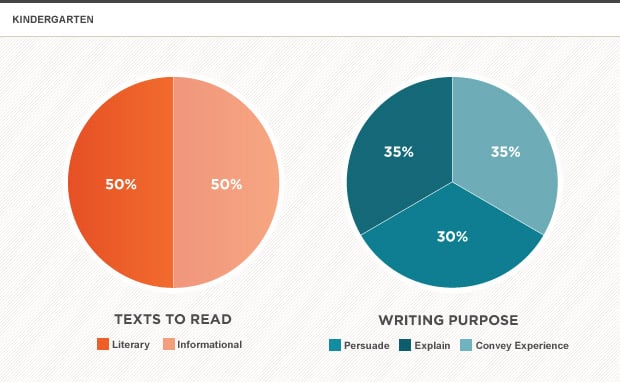
If you're seeing this message, it means we're having trouble loading external resources on our website.
If you're behind a web filter, please make sure that the domains *.kastatic.org and *.kasandbox.org are unblocked.
To log in and use all the features of Khan Academy, please enable JavaScript in your browser.
8th grade reading & vocabulary
Unit 1: funny business, unit 2: obscuring the truth, unit 3: crossing the line.
Grade Level Resources
Discover ideas and strategies that support literacy learning, specially curated for this grade band.
Select Grade
- Kindergarten K
Featured Resources , Grades 7-8

Grades 7 - 9
Lesson Plan Type: Unit
Finding Solutions to Food Waste: Persuasion in a Digital World

Grades 6 - 8
Let It Grow: An Inquiry-Based Organic Gardening Research Project
Most popular for grades 7-8.
- Most Emailed
- Most Viewed
- Most Shared
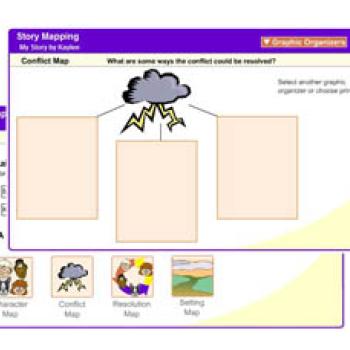
Grades K - 12
Student Interactive
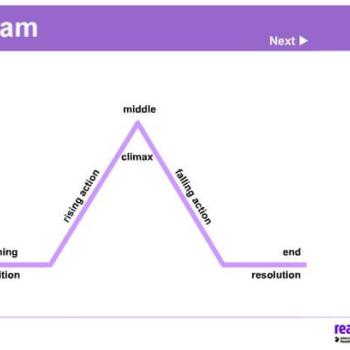
Grades 1 - 12
Plot Diagram
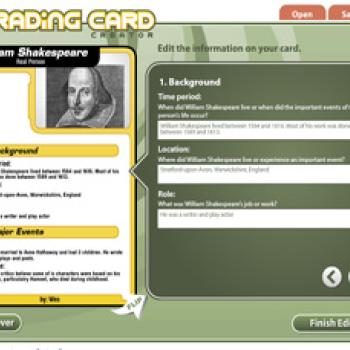
Grades 3 - 12
Trading Card Creator

Grades 6 - 12
Socratic Seminars
Strategy Guide

Grades 5 - 12
Introducing New Content with Seed Discussions
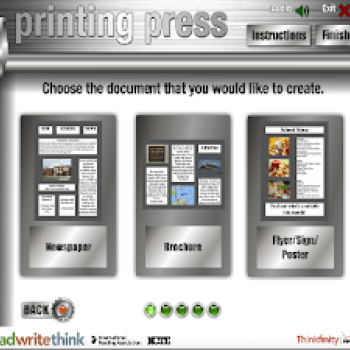
Printing Press

Diamante Poems
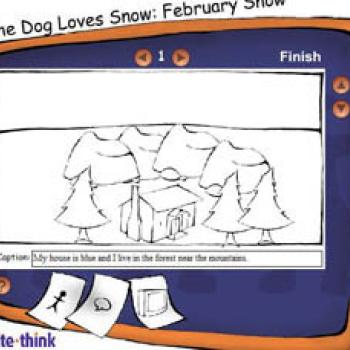
Comic Creator
Lesson plans.
We have hundreds of standards-based lesson plans written and reviewed by educators using current research and the best instructional practices. Find the perfect one for your grade band.
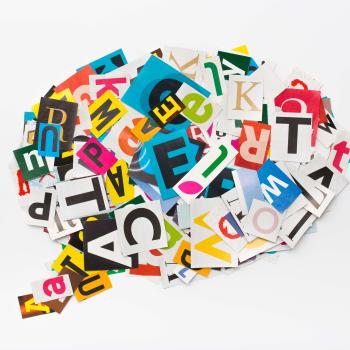
Alliteration in Headline Poems
Students are introduced to the term alliteration and asked to create their own examples of alliteration as well as find examples of alliteration in
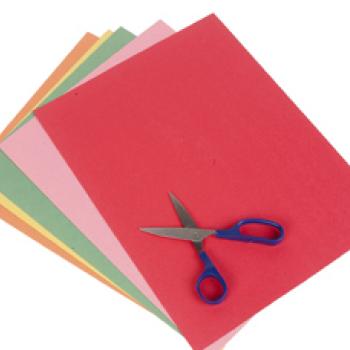
What Am I? Teaching Poetry through Riddles
Good riddles rely upon creative use of metaphor, simile, and metonymy; concrete imagery; and imaginative presentation and description of an object

Building Reading Comprehension Through Think-Alouds
Studies have shown that the think-aloud strategy improves reading comprehension on tests.

Creative Writing Through Wordless Picture Books
Wordless picture books offer a wonderful foundation for creative writing. Often, students struggle with ideas and topics for writing.
Student Interactives
Engage your students in online literacy learning with these interactive tools that help them accomplish a variety of goals—from organizing their thoughts to learning about language—all while having fun.
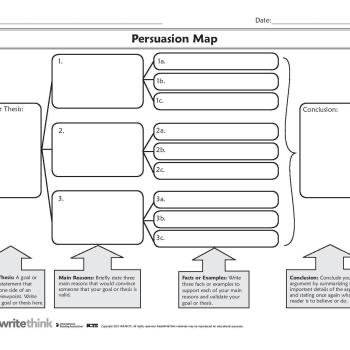
Persuasion Map
Use this graphic organizer to develop a persuasive stance for an essay, speech, poster, or any type of assignment that incorporates persuasion.
Grades 3 - 12 | Printout
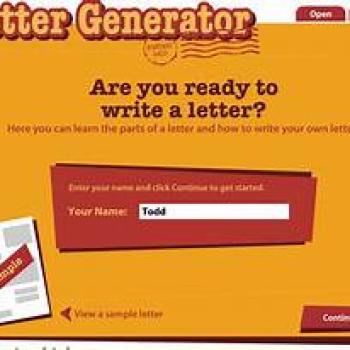
Letter Generator
The Letter Generator tool is designed to help students learn to identify all the essential parts of a business or friendly letter, and then generat
Grades K - 12 | Student Interactive
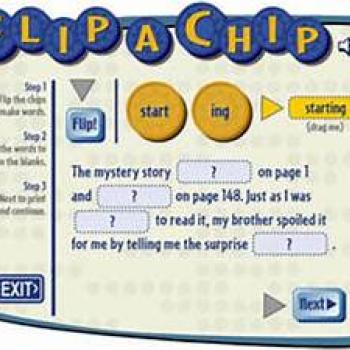
Flip-a-Chip
Effective vocabulary instruction requires active and positive student participation.
Grades 6 - 8 | Student Interactive
Professional Development
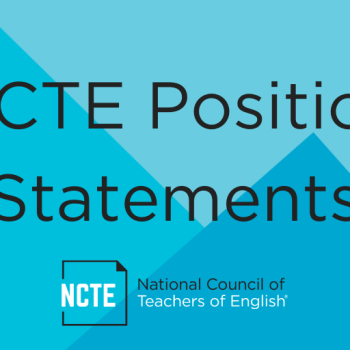
Professional Knowledge for the Teaching of Writing
With full recognition that writing is an increasingly multifaceted activity, we offer several principles that should guide effective teaching pract

Tracking and Supporting Student Learning with Kidwatching
In this strategy guide, you'll learn how to use kidwatching to track and support student learning.
Explore Resources by Grade
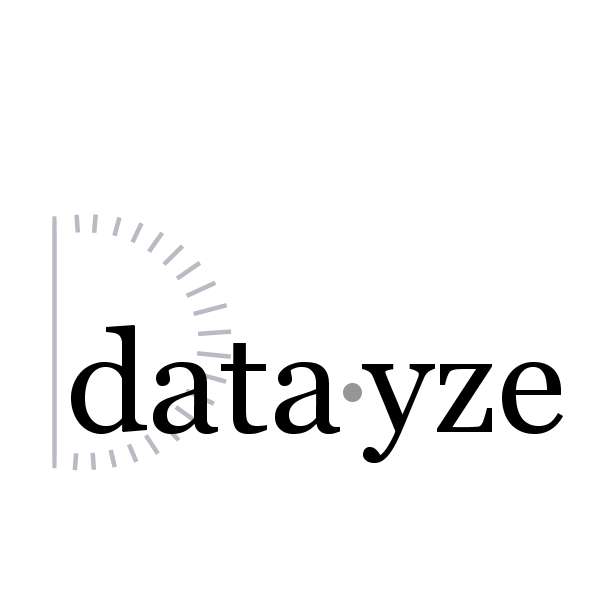
Readability Analyzer
- Overall Readability
- Paragraph Level Readability
- Other Readability Tools
This tab displays per-paragraph readability statistics to help you better understand what may be effecting the overall readability of the complete text you provide, as well as how readability may be changing over the course of the document. See our tips below for improving readability.
Please provide some text input to get started.
Difficult and Extraneous Word Finder
The difficult & extraneous word finder helps you write clearly and concisely by identifying possible weak points in your prose, including rare words, hard words, adverbs and extra hedge words.

Passive Voice Detector
Sentences with passive voice construction tends to contain extra words when compared to its active voice counterpart. Extra words make for longer sentences which can be more difficult to understand. Use Passive Voice Detector to find these overly wordy sentences.
Spell Checker
Highlights spelling mistakes in a passage of text.
About the Readability Analyzer
What is Readability? Readability refers to the ease in which a passage of written text can be understood. It is often used in assessing the suitability of a text for an audience. Some states even have requirements that legal documents and health care documents must met strict readability thresholds in order to be accessible to a wide audience. If you want to get your ideas across to the largest audience possible, it is worth spending some time thinking about readability.
Readability metrics, such as the Flesch-Kincaid and Gunning Fog index, are algorithmic heuristics used for estimating readability. Many work by counting words, sentences and syllables while others use lists of already scored words.
Keep in mind that readability is not a measure of writing quality and that these heuristics are only estimates of a passages readability.
This Readability Analyzer estimates the readability of a passage of text using the Flesch-Kincaid Reading Ease , Gunning Fog Index , Kincaid Grade Level , SMOG formula and Dale–Chall Score and Fry Reading Graph metrics. Which one's right for you? That will depend partially on your domain and writing style. Different readability metrics flag difficult words in different manners. For example, the Fog index considers words with more than three syllables difficult, where Dale-Chall has a list of easily recognizable words. We suggest using a few different samples of text and going with the metrics that more closely align with human evaluations.
The Analyzer works best with plain text.
Improving Readability. We recommend focusing on the passage as a whole, rather than individual sentences when looking to improve readability. Be careful when iteratively tweaking a passage not to fall into the trap of writing for the formula. Writing to the formula could lead passages that contain shorter, choppy sentences that are actually more difficult to read despite receiving a better score.
We have provided two tools to aid rewriting a passage. The Difficult and Extraneous Word Finder can be used to explore vocabulary. It identifies rare words, and long polysyllabic words with more than three syllables which may be harder for an audience to understand. The Difficult and Extraneous Word finder also finds extraneous words, such as adverbs and double hedge words which may make a sentence needlessly longer. Passive Voice Detector identifies sentences with passive structure. Passive voice is common in the scientific literature because it places the emphasis on the object being investigated rather than the author doing the investigation. Sentences with passive voice construction, however, tend to be longer, and harder to read.
Have your own website? Now you can use the Site Thin Content Checker to analyze the content of each page on your site with the Readability Analyzer, as well as and other Writing Assistance Tools .

Writing Products
- Level Primary (Grades K–2)
- Level A (Grades 3-5)
- Level B (Grades 6-8)
- Level C (Grades 9–12)
- Special Needs
- English Language Learners
- College Students
- Professional Development
- Teacher Helps
- Poetry / Literature
- Audio Course
- Paper-Based Course
- Product Kit
- Support Materials
- Video Course
- Title - A-Z
- Title - Z-A
Structure and Style for Students: Year 1 Level A Premier [Forever Streaming]
![writing at an 8th grade level Structure and Style for Students: Year 1 Level A Premier [Forever Streaming]](https://storage.googleapis.com/iew-public-production/products/sss-1a-prem-fs_thumb.jpeg)
This is our best recommendation of where to start for teachers and parents of Level A students new to IEW.Join Andrew Pudewa as he leads students on a 24-week writing journey using IEW’s Structure and Style approach. Students reading at a 3rd–5th grade level who are new to the Structure and Style for Students video course will take delight in Mr. Pudewa’s humorous, incremental, and effective writing lessons. The curriculum provides clear daily assignments and includes vocabulary words, literature suggestions, and lesson plans for teachers. In addition to the student writing course, teachers learn IEW methodology from their training course, Teaching Writing: Structure and Style. Easy to use and affordable, Structure and Style for Students plus Fix It! Grammar bring a successful solution to your writing and grammar lessons—guaranteed!
Structure and Style for Students: Year 1 Level B Premier [Forever Streaming]
![writing at an 8th grade level Structure and Style for Students: Year 1 Level B Premier [Forever Streaming]](https://storage.googleapis.com/iew-public-production/products/sss-1b-prem-fs_thumb.jpeg)
In this new course, join Andrew Pudewa as he leads students on a 24-week writing journey using IEW’s Structure and Style approach. Students reading at a 6th–8th grade level will take delight in Mr. Pudewa’s humorous, incremental, and effective writing lessons. The curriculum provides clear daily assignments and includes vocabulary words, literature suggestions, and lesson plans for teachers. In addition to the student writing course, teachers learn IEW methodology from their training course, Teaching Writing: Structure and Style. Easy to use and affordable, Structure and Style for Students plus Fix It! Grammar bring a successful solution to your writing and grammar lessons—guaranteed!
Structure and Style for Students: Year 1 Level C Premier [Forever Streaming]
![writing at an 8th grade level Structure and Style for Students: Year 1 Level C Premier [Forever Streaming]](https://storage.googleapis.com/iew-public-production/products/sss-1c-prem-fs_thumb.jpeg)
In this new course, join Andrew Pudewa as he leads students on a 24-week writing journey using IEW’s Structure and Style approach. Students reading at 9th grade level or higher will take delight in Mr. Pudewa’s humorous, incremental, and effective writing lessons. The curriculum provides clear daily assignments and includes vocabulary words, literature suggestions, and lesson plans for teachers. In addition to the student writing course, teachers learn IEW methodology from their training course, Teaching Writing: Structure and Style. Easy to use and affordable, Structure and Style for Students plus Fix It! Grammar bring a successful solution to your writing and grammar lessons—guaranteed!
Structure and Style for Students: Year 2 Level A Basic [Forever Streaming or DVD]
![writing at an 8th grade level Structure and Style for Students: Year 2 Level A Basic [Forever Streaming or DVD]](https://storage.googleapis.com/iew-public-production/products/sss-2a-basic-fs_thumb.jpg)
Take your 4th–6th-grade-students to the next level in their Structure and Style® writing journey! Twenty-four more weeks of incredible writing instruction await with the humorous and engaging Andrew Pudewa. Students who have completed Year 1 Level A and are ready for their second year of the Structure and Style for Students video course will enjoy reviewing and refining the seven previously learned IEW units, then pressing on to Units 8 and 9, Essays and Formal Critiques. The curriculum provides clear daily assignments and includes vocabulary words, literature suggestions, and lesson plans for teachers. Easy to use and affordable, the second year of Structure and Style for Students builds on the skills learned in the previous video course and brings a successful solution to your writing lessons—guaranteed!
Structure and Style for Students: Year 2 Level B Basic [Forever Streaming or DVD]
![writing at an 8th grade level Structure and Style for Students: Year 2 Level B Basic [Forever Streaming or DVD]](https://storage.googleapis.com/iew-public-production/products/sss-2b-basic-fs_thumb.jpg)
Take your 7th–9th-grade students to the next level in their Structure and Style® writing journey! Twenty-four more weeks of incredible writing instruction await with the humorous and engaging Andrew Pudewa. Students who have completed Year 1 Level B and are ready for their second year of the Structure and Style for Students video course will enjoy reviewing and refining the nine previously learned IEW units, then pressing on into writing responses to literature. The curriculum provides clear daily assignments and includes vocabulary words, literature suggestions, and lesson plans for teachers. Easy to use and affordable, the second year of Structure and Style for Students builds on the skills learned in the previous video course and brings a successful solution to your writing lessons—guaranteed!
Structure and Style for Students: Year 2 Level C Basic [Forever Streaming or DVD]
![writing at an 8th grade level Structure and Style for Students: Year 2 Level C Basic [Forever Streaming or DVD]](https://storage.googleapis.com/iew-public-production/products/sss-2c-basic-fs_thumb.jpg)
Take students to the next level in their Structure and Style® writing journey! Twenty-four more weeks of incredible writing instruction await with the humorous and engaging Andrew Pudewa. Students who have completed Year 1 Level C and are ready for their second year of the Structure and Style for Students video course will enjoy reviewing and refining the nine previously learned IEW units and response to literature, then pressing on into full literary analysis. The curriculum provides clear daily assignments and includes vocabulary words, literature suggestions, and lesson plans for teachers. Easy to use and affordable, the second year of Structure and Style for Students builds on the skills learned in the previous video course and brings a successful solution to your writing lessons—guaranteed!
Teaching Writing: Structure and Style®, Second Edition [Forever Streaming or DVD Video Seminar, Workbook, Premium Membership]
![writing at an 8th grade level Teaching Writing: Structure and Style®, Second Edition [Forever Streaming or DVD Video Seminar, Workbook, Premium Membership]](https://storage.googleapis.com/iew-public-production/products/twss2-fs_thumb.jpg)
This powerful and inspiring seminar will transform the way you teach writing to children (and perhaps your own writing as well)! You'll learn how to incrementally teach students to write with clear structure and compelling style. Begin with the basics—rewriting a paragraph—and continue all the way into advanced creative and essay writing. Learn how to nurture excellence in writing and thinking in students of any age.
University-Ready Writing [Forever Streaming or DVD]
![writing at an 8th grade level University-Ready Writing [Forever Streaming or DVD]](https://storage.googleapis.com/iew-public-production/products/urw-fs_thumb.jpg)
In this twelve-week video course, high school and college students learn effective note-taking strategies as they write précis (summaries) and essays, tackling assignments of varying lengths from one paragraph to several pages. With tips and tools for writing an abstract, creating and arranging content, citing sources, applying various style guides, using literary devices, and writing on-demand essays, this curriculum will prepare your students for university writing assignments.
Structure and Style for Students: Year 1 Level A Basic Plus [Forever Streaming or DVD]
![writing at an 8th grade level Structure and Style for Students: Year 1 Level A Basic Plus [Forever Streaming or DVD]](https://storage.googleapis.com/iew-public-production/products/sss-1a-plus-d_thumb.jpeg)
Join Andrew Pudewa as he leads students on a 24-week writing journey using IEW’s Structure and Style approach. Students reading at a 3rd–5th grade level who are new to the Structure and Style for Students video course will take delight in Mr. Pudewa’s humorous, incremental, and effective writing lessons. The curriculum provides clear daily assignments and includes vocabulary words, literature suggestions, and lesson plans for teachers. Easy to use and affordable, Structure and Style for Students plus Fix It! Grammar bring a successful solution to your writing and grammar lessons—guaranteed!
Structure and Style for Students: Year 1 Level A Basic [Forever Streaming or DVD]
![writing at an 8th grade level Structure and Style for Students: Year 1 Level A Basic [Forever Streaming or DVD]](https://storage.googleapis.com/iew-public-production/products/sss-1a-basic-fs_thumb.jpeg)
Join Andrew Pudewa as he leads students on a 24-week writing journey using IEW’s Structure and Style approach. Students reading at a 3rd–5th grade level who are new to the Structure and Style for Students video course will take delight in Mr. Pudewa’s humorous, incremental, and effective writing lessons. The curriculum provides clear daily assignments and includes vocabulary words, literature suggestions, and lesson plans for teachers. Easy to use and affordable, Structure and Style for Students brings a successful solution to your writing lessons—guaranteed!
100% Satisfaction Guarantee
We offer a 100% satisfaction, no time limit guarantee on everything we sell.

Be Readable
Readable is an online toolkit that helps writers improve their readability and bring their audience closer..
Test Your Readability >
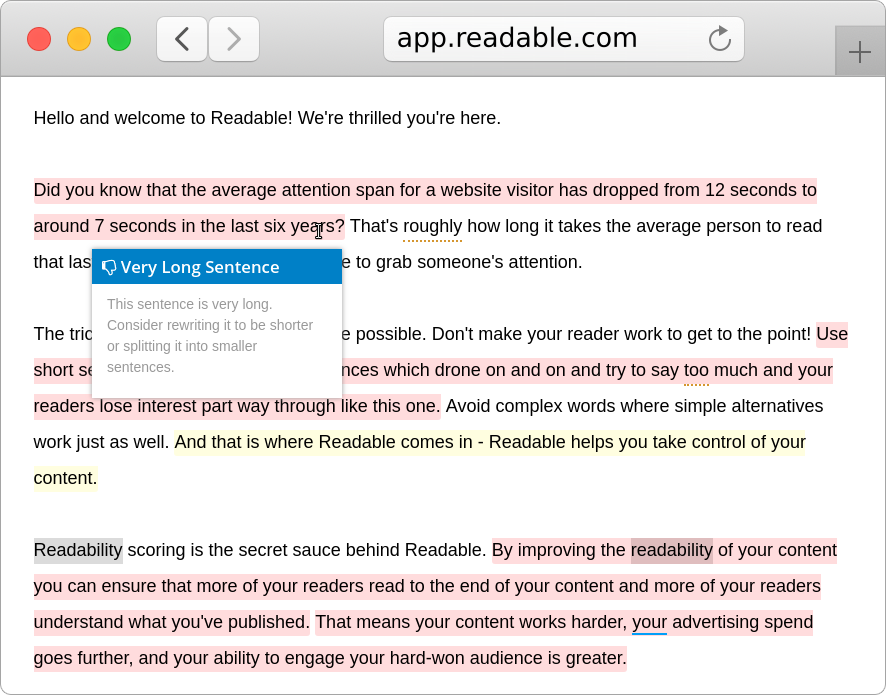
Your readability toolkit
Powerful, flexible readability tools that work where you work..
Unrivalled Readability Scores
Find the most accurate scores for formulas such as Flesch-Kincaid and SMOG, as well as our own bespoke readability algorithm.
Read more about the scores that power Readable »
Actionable Insight
Readable is packed full of features you won't find anywhere else. Hone your content for clarity and engagement to captivate your audience.
Find out more about Readable's writing style features »
For Everyone
Whoever your audience or whatever your medium, Readable's user-friendly editor is suitable for all kinds of writers.
Find out how Readable can work for you »
3,000+ authors, marketers, and educators trust us to deliver accurate readability analysis.

Discover the Power of Readability
Be understood.
Grow your audience with clear, readable content.
85% of people can understand your content if it is a Readable grade A.
Clarity Features »
Make an impact
Attract new customers with crisp, dynamic content.
57% of customers are more likely to recommend you if they feel emotionally connected to your brand.
Impact Features »
Build loyalty
Retain customers with direct, trustworthy content.
Readability builds customer trust. 81% of consumers said trust is essential in a buying decision.
Audience Connection features »
Readability Tools
Document readability.
Improve your document readability and connect with your readers.
ContentPro helps you to produce clear, compelling content, helping you to engage with your audience.
Website Readability
Improve your website readability and lift conversions.
CommercePro is a suite of tools with a unique algorithm. The results give you actionable steps to optimise your website for readability.
- Readability API
Integrate readability into your workflow and increase efficiency.
The Readability API on AgencyPro easily integrates into your website, CMS, product or service. Bring quality readability scores into your business.
What our happy customers say

Our promise to you
We are dedicated to providing the most comprehensive readability tools.
Accurate. Our scores are backed up by established readability algorithms and verified by over 10,000 automated tests and hand-calculated scores. You can be confident in your results.
Fresh. Our leading-edge readability checker is up to date with changes in standards. You can be sure your feedback is current and reflects real-world reading behaviour.
Here for you. We support your writing goals with our helpful resources and outstanding customer service.
Who's Readable for?
People and companies who want to make their content easy to read and understand.
Readable is used across all sectors and professions by people who value clarity and transparency in their business practice.
What is a readability score?
A readability score can tell you the level of education someone needs to easily read a piece of text. The score identifies a Grade Level relative to the number of years of education a person has. Read more about readability scores .
- What is readability?
Readability is a measure of how easy a piece of text is to read. Read more about readability .
What is a good readability Score?
A Grade Level of 8 or lower is good for text aimed at the public. 85% of the public will be able to read and understand your content at Grade Level 8. Read more about readability scores .
Readability Glossary
Filter: All | Formulas | App Terms | Grammar
- Automated Readability Index
- Coleman Liau
- Determiners
- Flesch Reading Ease
- Flesch-Kincaid
- Fry Readability Graph
- Gunning Fog
- Hedge Words
- Keyword Density
- Lensear Write
- Lix Readability
- Passive Voice
- Personalism
- Powers Sumner Kearl
- Punctuation
- Raygor Readability Graph
- Rix Readability
- Transition Words
Latest from the Blog

- Is there an optimal window for language acquisition?
Language is a fundamental human ability. One that allows us to connect, share ideas, and shape our views. But how do we acquire this complex skill?
- Navigating professionalism in language: a guide
We explore key aspects of professionalism in language and look at the essentials to help your workplace communication. Read more

- Exploring the merits of lengthy celebrity memoirs
Barbra Streisand's memoir, My Name is Barbra became newsworthy for its length. We look at how Streisand's tome compares to other celebrity memoirs. And the merits of such extensive works.
7 Days Free Readability Scoring
Try Readable for 7 days entirely free, or cancel any time if you don't love it.
- Website readability
- Text and file readability
- Readability formulas
- Spelling and grammar
- Pricing and Sign up
- Readability handbook
- Knowledge base
- Grammar Resources
- Terms and conditions
- Data processing
Readable Blog
- Content Marketing
- Grammar Blog
- Readability News
- The Joy of English
Latest blogs
Copyright © 2011 - 2024 Readable. Part of the Added Bytes family. All Rights Reserved. Unit 11, Bridgers Business Barns, Bridgers Farm, Langton Lane, Hassocks, BN6 9HA Company: #8026399 VAT: #193695360
Your version of Internet Explorer is out of date. It has known security flaws and can cause issues displaying content on this page, and other websites.
Learn how to update your browser
Readability
Content readability affects user engagement, page views and search performance. Use the following tips to help guide you as you create content.
Tip #1: Keep in mind your audience
Generally, writing for an eighth-grade reading level will make your content easy to absorb and understand by readers.
Tip #2: Easy to read and scan
For easier understanding by readers and/or search crawlers:.
- Write short and clear paragraphs – recommend using fewer than seven sentences per paragraph
- Write short sentences – average sentence length should be 18-20 words
- Include bullets – easy to scan content
- Use bolded fonts – easy to scan and highlight
Tip #3: Limit use of difficult words
Use natural, clear and simple language with easy to understand words.
Tip #4: Avoid using passive voice.
Readers stay engaged when active voice is used.
Our support team is here for you.
- Public Relations Society of America (PRSA)
What Readability Level Makes Sense for Your Audience?

Would you like to learn more techniques for reaching your readers with readable text? If so, then join PRSA and Ann Wylie at Rev Up Readability , our clear-writing workshop, starting Dec. 6. You’ll master a system for boosting click-through and open rates with compelling emails that overcome the obstacles of reading on mobile. Save $100 with coupon code PRSA21! APRs: Earn 4 Accreditation renewal credits.
It never fails.
In my writing workshops, when I talk about the importance of making copy easy to read and understand, there’s always one person who can’t believe the advice applies to her.
“Are you kidding?” she gasps. “I’m writing to executives/pharmacists/school district superintendents/telecomm engineers/financial planners. These folks are superbly educated, brilliant and divine. There’s no way they’ll read anything that easy.”
So you think your audience wants it to be harder? Think again.
1. Start with average.
The average U.S. adult reading level is 8th grade.
Is your audience average? Yes: Target 7th- or 8th-grade reading levels.
Not so average? Then consider going lower.
2. Consider going lower.
Some people are less literate than others. For instance, according to the world’s huge global literacy test, the Program for the International Assessment of Adult Competencies:
Education: Education is the most reliable predictor of literacy, according to OECD. On average, literacy scores increase by 10 points for each year a person remains in school. The lower your readers’ level of education, the easier your copy should be to read.
Industry: People with poor reading proficiency tend to have more health problems, for instance. So if you’re writing to health care consumers, consider aiming lower.
How low? The best reading level for health information is 5 th grade, say researchers Michael D. Aldridge and Kenneth Brownson.
Types of devices: Also, reduce the grade level when you’re writing for mobile devices. Mobile screens cut understanding in half, according to research by R.I. Singh and colleagues from the University of Alberta.
3. Consider going even lower.
In general, the higher the literacy skills, the higher the job ranking, according to the PIAAC. Managers and professionals, for instance, tend to (but don’t always) have higher literacy skills than technicians, craft workers or machine operators. And people with high literacy skills are less likely to be blue-collar workers than those with lower skills.
But, I’ve always argued that if you think your audience members are especially elevated or educated, then you should make your copy more accessible. Highly educated executives, after all, tend to have more stuff to read and less time to read it.
However, even if you’re writing to brain surgeons and rocket scientists, then keep your grade level average low. That’s because:
- People don’t read at their grade level. On average, high school graduates read at the 9 th -grade level, according to William H. Dubay, readability consultant at Plain Language Services. College graduates at the 12 th -grade level.
- Over time, reading skills decline. On average, Dubay says, adults read at five grade levels lower than the last grade they completed.
- People don’t want to read at their grade level. “People prefer to read and get information at a level below their capacity,” says Douglas Mueller, president of the Gunning-Mueller Clear Writing Institute. “Even a Harvard University professor prefers to get information without strain.”
Nobody wants it to be harder. No matter your audience, make your message easier to read.
Ann Wylie works with communicators who want to reach more readers and with organizations that want to get the word out. To learn more about her training, consulting or writing and editing services, contact her at [email protected]. Get FREE writing tips here . Find more than 2,000 writing tip sheets at RevUpReadership.com .
Copyright © 2021 Ann Wylie. All rights reserved.
You may also like

Pride Month in a Year of Loathing: Allies Needed

Recognizing AAPI Month: Communications Leaders Driving...

As People Live and Work Longer, Companies Urged to End...

Legislation Would End Content-Liability Protections...

Why the ‘Stealing Thunder Theory’ of...

Poll: Americans Wary of News Coverage on 2024 Elections
About the author.
I really enjoyed reading this blog’s stance on how to determine what type of readability level makes the most sense for your target audience. This blog post is very beneficial to writers, like myself, to learn how to write for specific audiences across different types of platforms. I really took away how to potentially write in different ways, so it can be accessible to an audience.
Leave a Comment X
Save my name, email, and website in this browser for the next time I comment.
- Skip to primary navigation
- Skip to main content
- Skip to footer

Essentials in Writing
Where learning to write well has never been so easy

Essentials in Writing Level 8 Second Edition
EIW™ Level 8 is a homeschool writing curriculum that features a slow, systematic approach for students aged 13-14 who want to learn how to write well. The step-by-step approach allows students to focus on small, daily assignments, so they don’t feel overwhelmed.
Order Essentials in Literature only Order replacement textbooks & assessment resource books
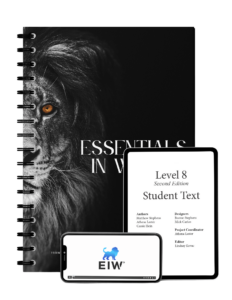
- Writing Student Book
- Teacher Handbook
- Video Lessons
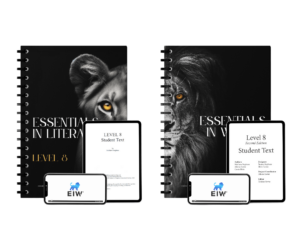
English Bundle
Writing and literature.
- Writing and Literature Student Book
- Teacher Handbooks
- Novel (Night)
Customize your package
Add Digital Assessment/Resource Booklet
Add Digital Level 8 Assessment/Resource Booklet
Includes: all online videos on DVD for offline remote viewing if needed
Add Scoring Service
Level 8 Scoring for 2024-2025
Add Print Assessment/Resource Booklet
Add a printed Level 8 Assessment/Resource Booklet
Add Additional Writing Textbook
Add Additional Printed EIW8 Second Edition Textbook
Add DVDs – Writing
Add DVDs – Literature
Add Printed Level 8 Assessment/Resource Booklet
Add Additional Literature Textbook
Add Additional Printed EIL8 Textbook
Add Additional Novel
Night by Elie Wiesel
Package Total $ 0
Don't forget
Customers often also purchase
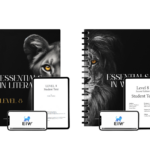
Add Literature to Bundle
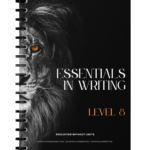
Digital Assessment/Resource Booklet

Scoring Service

Print Assessment/Resource Booklet

Additional Writing Textbook

DVDs – Writing

DVDs – Literature
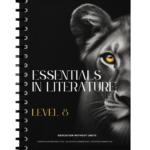
Additional Literature Textbook
Additional Novel
Homeschool students will learn to apply parts of speech and different sentence structures as well as use them as tools for effective communication. They will address common problems in writing, including sentence errors, pronouns and antecedents, subject/verb agreement, homophones, unclear subjects, paraphrasing, and summarizing. They will practice crafting compositions including paragraphs, a narrative, a business letter, essays, and a research project. Students will explore expository, descriptive, persuasive, compare, and contrast writing.
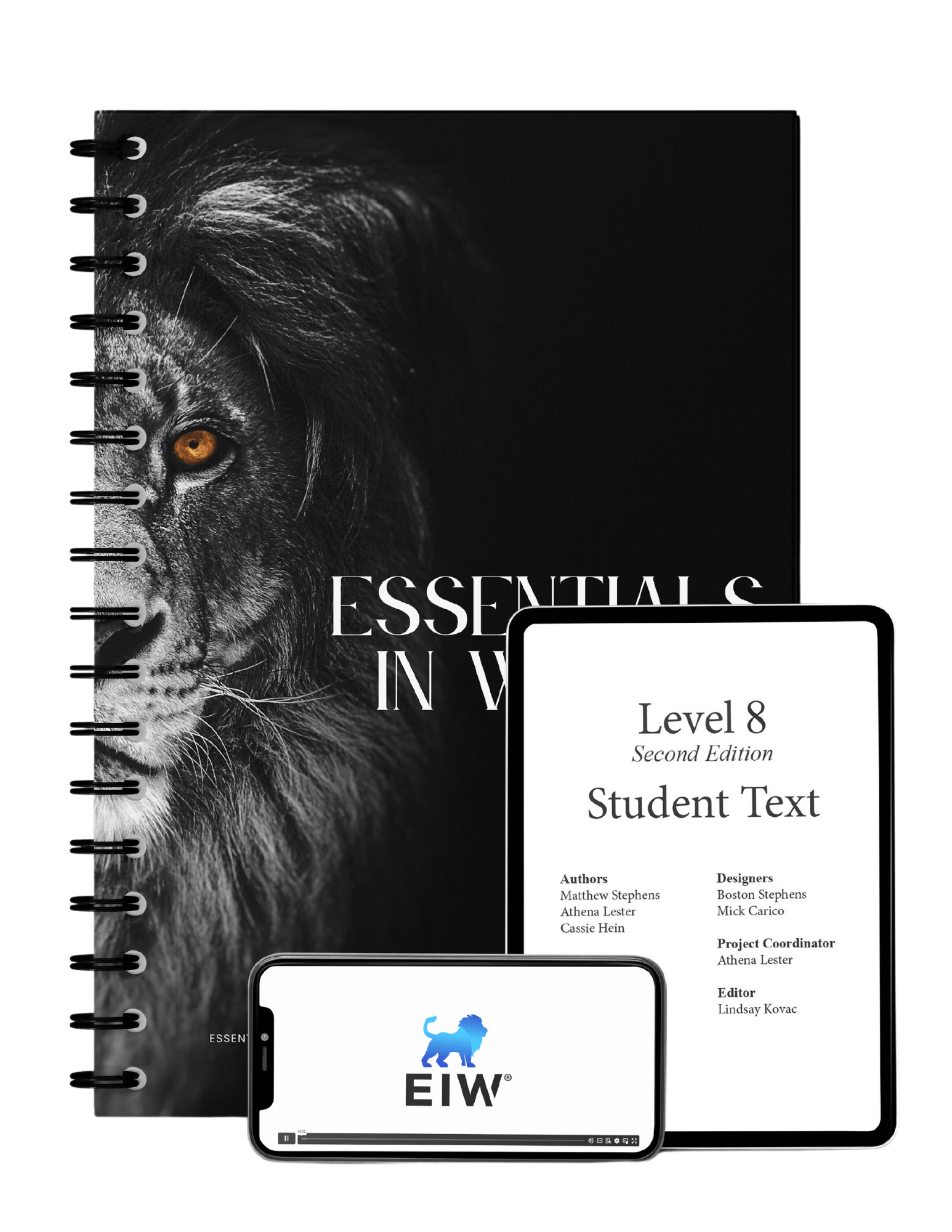
Unit One: Grammar
Apply activities for parts of speech:.
- Action Verbs
- Prepositional phrases
- Vivid Language
Apply activities for sentence structure:
- Independent and Dependent clauses
- Simple and Compound Sentences
- Complex Sentences
- Compound-Complex Sentences
- Avoiding Sentence Errors (fragments, run-ons, and comma splices)
- Varied Sentences in a Composition
- Appositives
- Transitions
Apply activities for common problems:
- Pronouns and Antecedents
- Subject/Verb Agreement
- Don’t/Doesn’t Problem
- Unclear Subjects
- Paraphrasing
- Writing a Summary
Unit Two: Composition
Follow the writing process for:.
- Paragraphs (expository, persuasive, descriptive, compare, and contrast writing)
- Expository essay
- Compare/contrast business letter
- Persuasive essay
- Research project
Additional composition skills:
- Audience and purpose
- How to choose an appropriate writing form
- Informal and formal writing
- Finding and using quality sources to research and explain a topic
- Effective narrative writing skills (first and third-person point of view, mechanics of dialogue, narrative hook, narrative writing)
- Letter formatting (business letters)
- Effective writing skills (sensory details, hooks, thesis statement and restatement, mechanics of dialogue, first and third-person point of view, transitions, variety of sentence structures and word choice)
- Summarizing and paraphrasing someone else’s content in their own words
- Develop supportive, strong details and examples
Sample Lesson Video – Level 8 Second Edition
Level 8 Second Edition – Sample PDFs
- LEVEL 8 SECOND EDITION TEXTBOOK SAMPLE
- LEVEL 8 ASSESSMENT/RESOURCE SAMPLE
- Level 8 34-Week Plan
- Alternative Instructional Strategies – PDF
Frequently Asked Questions About Level 8 Writing Curriculum
How old are 8th level students.
The general age for students completing Level 8 is 13 or 14 years old. The age can vary depending on if a child has started school early, on time, or is repeating a grade. The age of the student does not delegate if a child can complete this writing course. Instead, we recommend that students have a basic understanding of spelling, grammar, sentences, composition, and the skills taught in the upper elementary levels before beginning.
What is taught in Level 8?
Level 8 will teach students to apply parts of speech and sentence structures to produce more complex, purposeful writing and explores more advanced grammatical concepts such as gerunds and appositives, as well as advanced sentence structures like compound-complex sentences. Activities also provide practice for valuable skills in paraphrasing and summarizing. Composition activities in Level 8 reinforce the writing process for expository, persuasive, descriptive, narrative, and research writing. Students will gain familiarity with the business letter format and the mechanics of dialogue and continue to learn techniques that will allow them to write with greater clarity and development, such as thesis statement development and organizing compositions.
What is the 8th grade homeschool writing curriculum?
In homeschool, 8th grade writing curriculum consists of online video lessons, a student textbook/workbook, and an answer key. Parents use this homeschool writing curriculum to guide their students through grammar and writing for the 8th grade. Eighth grade students should already have a basic understanding of grammar, how to write sentences and a basic paragraph, and the basic concept of beginning, middle, and end in writing.
Why choose Essentials in Writing?
Essentials in Writing is an excellent choice for homeschool curriculum because it is not parent intensive, and each composition follows a step-by-step process (The Writing Process) broken down into small chunks of information with the act of modeling provided by the teacher, Mr. Stephens, on video.
8th grade writing as a Tutoring Program
Many parents and teachers use this program for the children and students as a middle school writing tutor. Because each composition follows a step-by-step process (The Writing Process) broken down into small chunks of information with the act of modeling provided by the teacher, Mr. Stephens, on video, students learn to write well with ease. Additionally, given the fact that the lessons are short, and compositions are written over several days rather than in one sitting, Essentials in Writing is an easy add to a student’s school day, like an after-school tutoring program. Most lessons are a maximum of 30 minutes each day, including the time students spend watching the teacher on video and working on the assignment.
What is included in the Workbook and Assessment/Resource Book?
8th Grade Writing Workbook
- Lesson content that accompanies the video lesson
- Lesson activities that accompany the video lesson
- Writing graphic organizers that accompany the video lesson
- Separate parent/teacher handbook
- How to use the program
- 34-week lesson planning option
- Writing icon descriptions
- Sample answers for each lesson
- Scoring rubrics for compositions
- Point values for each activity and composition
- How to score activities and compositions
8th Grade Writing Assessment (A) / Resource (R) Book
- (A) Multiple choice, underline, fill-in-the-blank for each mini section of the grammar unit
- (A) Composition assessments for each composition completed in the workbook
- (A) Unit One and Unit Two comprehensive assessments
- (R) Extra graphic organizers
- (R) Extra helpful graphics
- (R) Extra composition rubrics
- (R) Research project source cards
- (R) Extra writing checklists
- (R) Additional word lists
The Assessment/Resource Book will provide students the opportunity to show what information they are retaining. Although some parents/teachers use the assessments as actual evaluations, others use them as extra practice. The point values are included to help parents/teachers track and evaluate the student’s progress, though some parents may not use them. The additional word lists and graphics are valuable in improving student vocabulary and remind the student of important writing techniques.
What if I have multiple students?
Additional 8th grade writing workbooks can be purchased to provide a workbook for another child/student. The workbook does not have additional information and is just another core workbook for another student so that each student has their own workbook to use.
What should a grade 8 homeschool student know by the end of the year?
Students completing their 8th grade year should have mastered a number of skills and writing techniques.
- Apply parts of speech in writing
- Identify and correct common writing problems
- Use writing techniques to communicate effectively in written language
- Identify and use a variety of clauses and sentence structures to develop quality sentences
- Know and understand how to effectively paraphrase and summarize content
- Follow the writing process to communicate in paragraphs, narratives, letters, and essays
- Know and understand how to use strong details and examples to support opinions and explanations in writing
- Know and understand how to develop thesis statements for larger compositions
- Identify audience and purpose
- Use graphic organizers effectively to organize writing content
- Know how to choose an appropriate writing form
- Understand informal and formal writing
- Understand how to format personal and business letters
- Know and understand effective writing skills: strong details, transitions, variety of sentence structure, effective use of dialogue, and effective use of vivid language and sensory details
- Research a topic using quality sources, paraphrase content, and include multiple small compositions in a research project
What is included in the course?
Unit One covers grammar instruction with activities where students learn to apply parts of speech, to identify and correct common problems in writing, to use parts of speech along with a variety of sentence structures and vivid language as tools for effective communication, and to effectively paraphrase and summarize content.
Unit Two covers the writing process for multiple compositions as well as how to communicate effectively in written language through a variety of styles and formats by applying effective writing tools. The unit ends with a research project.
Does each unit come with worksheets and tests?
Both units are included in the 8th grade writing curriculum Workbook/Textbook. This book contains instructional content as well as worksheet activities related to both units (grammar and composition). An Assessment/Resource Book is available for purchase to accompany the Workbook/Textbook and includes a variety of assessments in different formats as well as additional resources such as graphic organizers and resource word lists.
Does the workbook include a daily/weekly curriculum planner?
Each level of Essentials in Writing includes a 34-week suggested, yet optional, lesson planner.
How much time will students need to complete a course?
The time needed to complete the 8th level writing curriculum is a typical academic year (34 weeks). If students follow the 34-week plan included, they will complete individual lessons and activities during the week; however, because the lessons are broken up into small, daily mini-lessons, students can double up on some lessons and activities and complete the entire course sooner. Each day, students will spend 15-30 minutes on writing.
Can I grade my student’s papers myself?
Yes. Essentials in Writing provides both scoring checklists and rubrics for your convenience with sample compositions for comparison purposes.
Some parents, however, choose to use The Essentials in Writing Scoring Service. This service is an optional add-on that takes the scoring burden off the parent/teacher and places it on the scoring team! Our Scoring Team includes a variety of qualified individuals including long-time educators, librarians, and professionals with Bachelor’s degrees in English.
Parents of students completing Levels 6, 7, 8, 9, 10, 11, or 12 of Essentials in Writing are eligible to purchase this service. Offered from September 1 to June 15 of each school year, one composition for each EIW composition assignment may be submitted for scoring. If purchased after the September 1 start date, services still expire on June 15 of the following year.
The scoring system includes:
- Online access through Gradient where the Scoring Services are conducted
- One final composition from each composition lesson of Essentials in Writing to submit for scoring
- Feedback in the form of a rubric with a score as well as a one-paragraph write-up from their scorer complementing strengths and sharing areas to improve, plus, detailed comments and suggestions within the composition
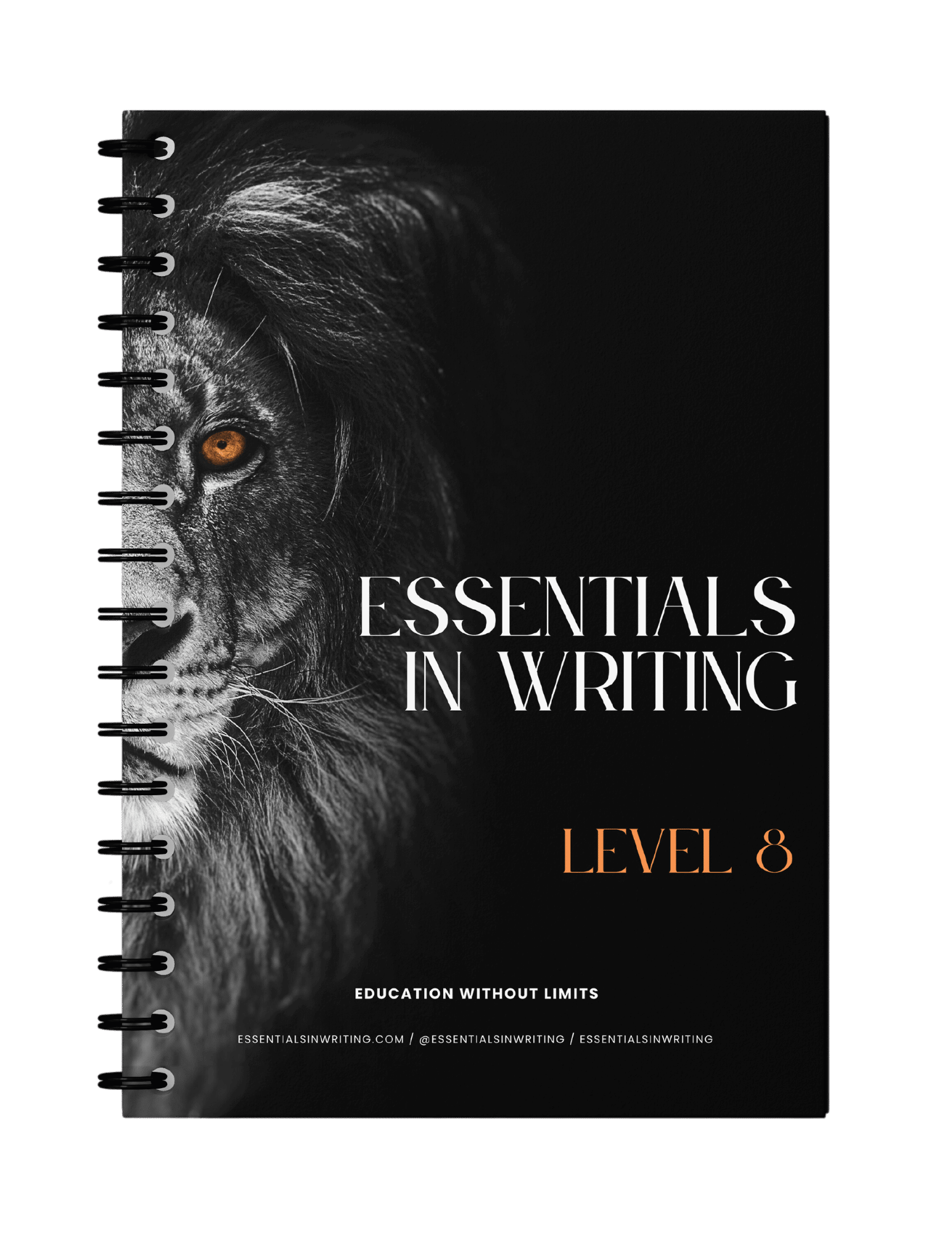
Additional Student Level 8 Workbook
(Additional Workbook is compatible only with second edition Essentials in Writing video instruction)
This is only a Student Workbook for an ADDITIONAL student using the same level of video instruction. Please note that the Workbook is not functional without the related video instruction.
About The Scoring Service
Let Essentials in Writing take the scoring burden off your mind! Our Scoring Team includes a variety of qualified individuals, including long-time educators, librarians, and professionals with Bachelor’s degrees in English, and they are ready to take the burden of grading compositions away from you.
Parents of students completing levels 6*, 7*, 8*, 9, 10, 11 or 12 of Essentials in Writing are eligible to purchase this service. (*Second Editions only.) Offered from September 1 to June 15 of each school year, one composition for each EIW assignment may be submitted for scoring. If purchased after September 1 start date, services still expire on June 15 the following year.
How Do The Scoring Services Work?
- Available from September 1 to June 15 (one school year).
- One final composition from each composition lesson of Essentials in Writing may be presented for scoring.
- Students receive a rubric with a score as well as a one-paragraph write-up from their scorer complimenting strengths and sharing areas to improve, plus, detailed comments and suggestions within the composition.
- Scoring Services will be conducted online through Gradient, Essentials in Writing’s online grading platform.
PLEASE NOTE: Scoring services are for Essentials in Writing only and are not eligible for unconditional money back guarantee.
Read More About Our Scoring Service
(Assessment/Resource Booklet is compatible only with second edition Essentials in Writing curriculum)
Assessment/Resource Booklet
- Assessments 16 grammar assessments in a variety of formats (fill in the blank and revision activities associated with both sentences and larger compositions), five composition assessments, and two comprehensive unit tests
- Resources Parent/student full-color word lists, composition resources, and multiple graphic organizers
Essentials in Writing comes with Online Streaming Video Instruction
- ONLINE STREAMING 12 month access to ONLINE lesson-by-lesson video instruction (Free renewals upon request)
- DVD DVD video lessons can be added for $45.00 plus shipping (This includes access to online streaming as well)
Analyzing fiction, nonfiction, novel, and poetry/figurative language.
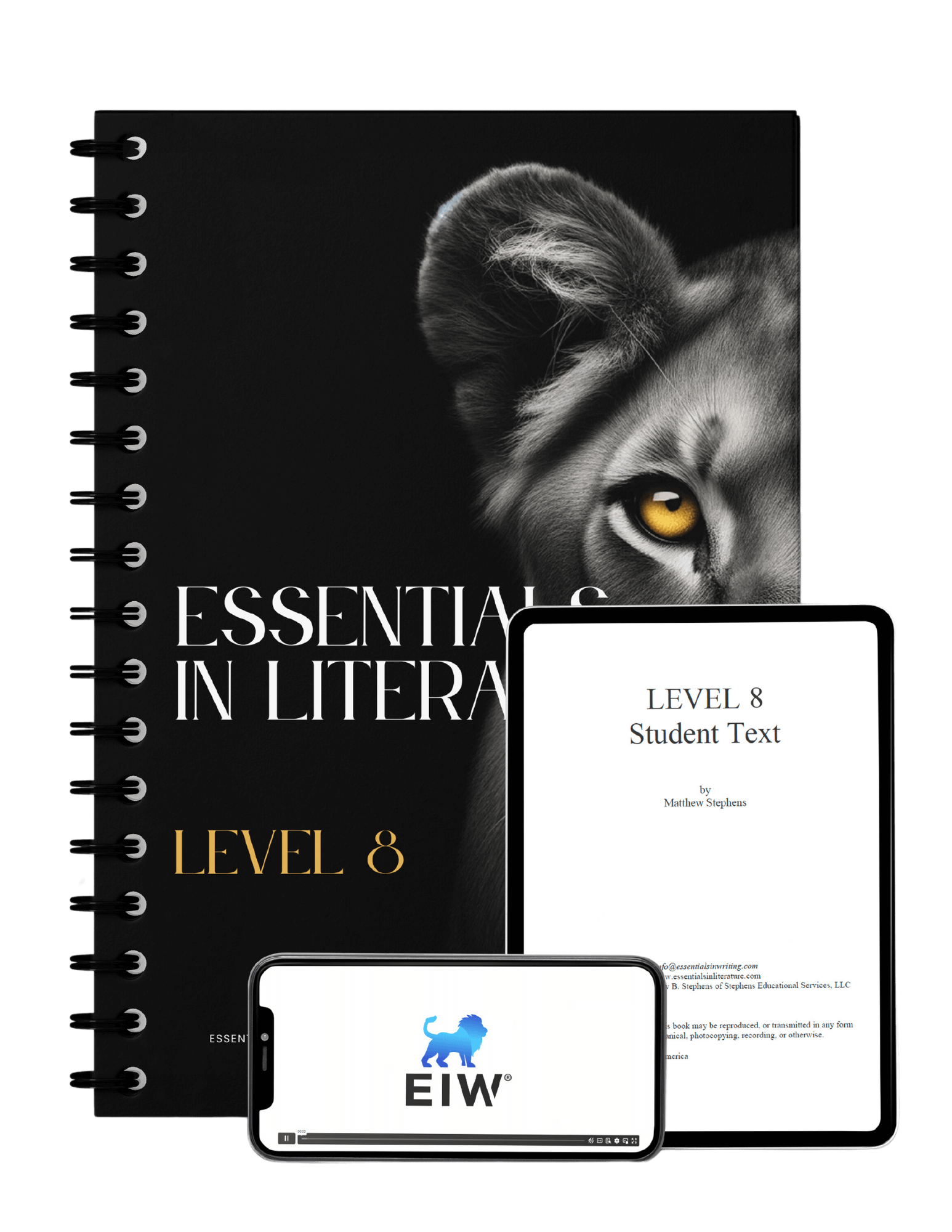
Unit 1: Fiction (Short Stories)
- Fiction unit terms and explanation
- 6 short stories (application)
- 1 summative assessment
Unit 2: Nonfiction (Short Literary Works)
- Nonfiction unit terms and explanation
- 6 nonfiction works (application)
Unit 3: Novel
- 1 Novel (literary analysis application)
- 1 major writing activity
Unit 4: Figurative Language/Poetry
- Figurative Language/Poetry Unit terms and explanation
- 6 units of up to 8 literary works (application)
Sample Lesson Video – Level 8
Level 8 – Sample PDFs
- Level 8 Textbook Sample
- Level 8 Literary Works
Frequently Asked Questions About Level 8 Essentials in Literature
Essentials in Literature Level 8 breaks down into four units with each unit focusing on a different aspect of literature. Unit One uses short story fiction to explain fiction terms and includes six short stories (application) and one summative assessment. Unit Two uses short nonfiction works to define terms and includes six nonfiction works (application) and one summative assessment. Unit Three centers around one novel (literary analysis application) with one summative assessment and one major writing activity. Unit Four is the Figurative Language/Poetry Unit with a full explanation of terms, six units of up to eight literary works (application), and one summative assessment.
How are tests and assignments graded?
Scoring is for Essentials in Writing only, and there is no scoring for Essentials in Literature. The literature curriculum provides parents with scoring guides found in the answer key that include sample answers for each activity.
How much time will students need to complete Essentials in Literature?
The Essentials in Literature follows the same 34-week timeline as Essentials in Writing, but students can work faster than the intended timeline to finish the course sooner. Each day, students will spend 15-40 minutes on literature.
Does the Workbook include a daily/weekly curriculum planner?
Essentials in Literature Level 8 includes a 34-week suggested, yet optional, lesson planner geared for middle school level learning.
Will I need to purchase additional reading material for this curriculum?
Shorter works for Units One, Two, and Four can be found online. Instructions are given in the Parent/Teacher Handbook. The chosen novel for Unit Three is included with the purchase of Essentials in Literature Level 8.
What is included in the bundle?
The bundle for Level 8 includes both Essentials in Writing and Essentials in Literature. The textbook, workbook, and video content are included in the bundle price.
Difference between the writing workbook and literature workbook?
Essentials in Writing textbook/workbook is the writing component whereas Essentials in Literature textbook/workbook is the literary analysis component in order to earn an English credit at the middle school level.
This is only a Student Textbook/Workbook for an ADDITIONAL student using the same level of video instruction. Please note that this Workbook is not functional without the related video instruction.
Scoring Services are for Essentials in Writing only.
- DVD DVD video lessons can be added for $25.00 plus shipping (This includes access to online streaming as well)
Try it Free!
Try it Now!
Not sure which level is right for your student? Use the level wizard .

Recommended ages 12-13
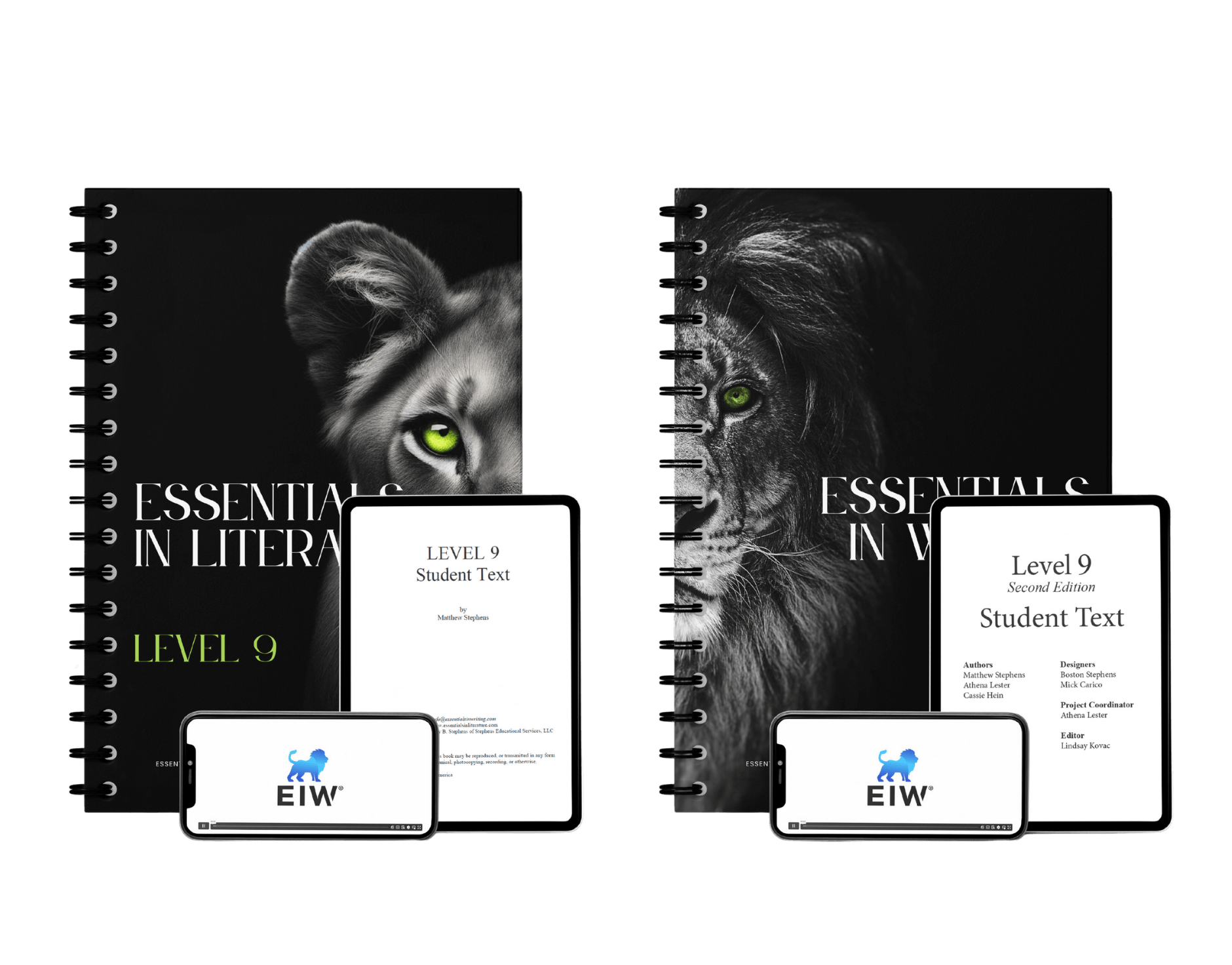
Recommended ages 14-15

Writing Courses
- Level 1 (ages 6-7)
- Level 2 (ages 7-8)
- Level 3 (ages 8-9)
- Level 4 (ages 9-10)
- Level 5 (ages 10-11)
- Level 6 (ages 11-12)
- Level 7 (ages 12-13)
- Level 8 (ages 13-14)
- Level 9 (ages 14-15)
- Level 10 (ages 15-16)
- Level 11 (ages 16-17)
- Level 12 (ages 17-18)
Literature Courses
- Level 7 (ages 12–13)
- Level 8 (ages 13–14)
- Level 9 (ages 14–15)
- Level 10 (ages 15–16)
Other Services
- Scoring Services
- Frequently Asked Questions
- Home School Resource Center
- Supplemental Writing Program (18-week plan)
- Summer Writing Program (10-week plan)
- Charter Schools
- Homeschool Heroes
- Giving Back
- International Customers
- Terms of Use

(417) 256-4191
- Grades 6-12
- School Leaders
NEW: Classroom Clean-Up/Set-Up Email Course! 🧽
The Best Student Writing Contests for 2023-2024
Help your students take their writing to the next level.
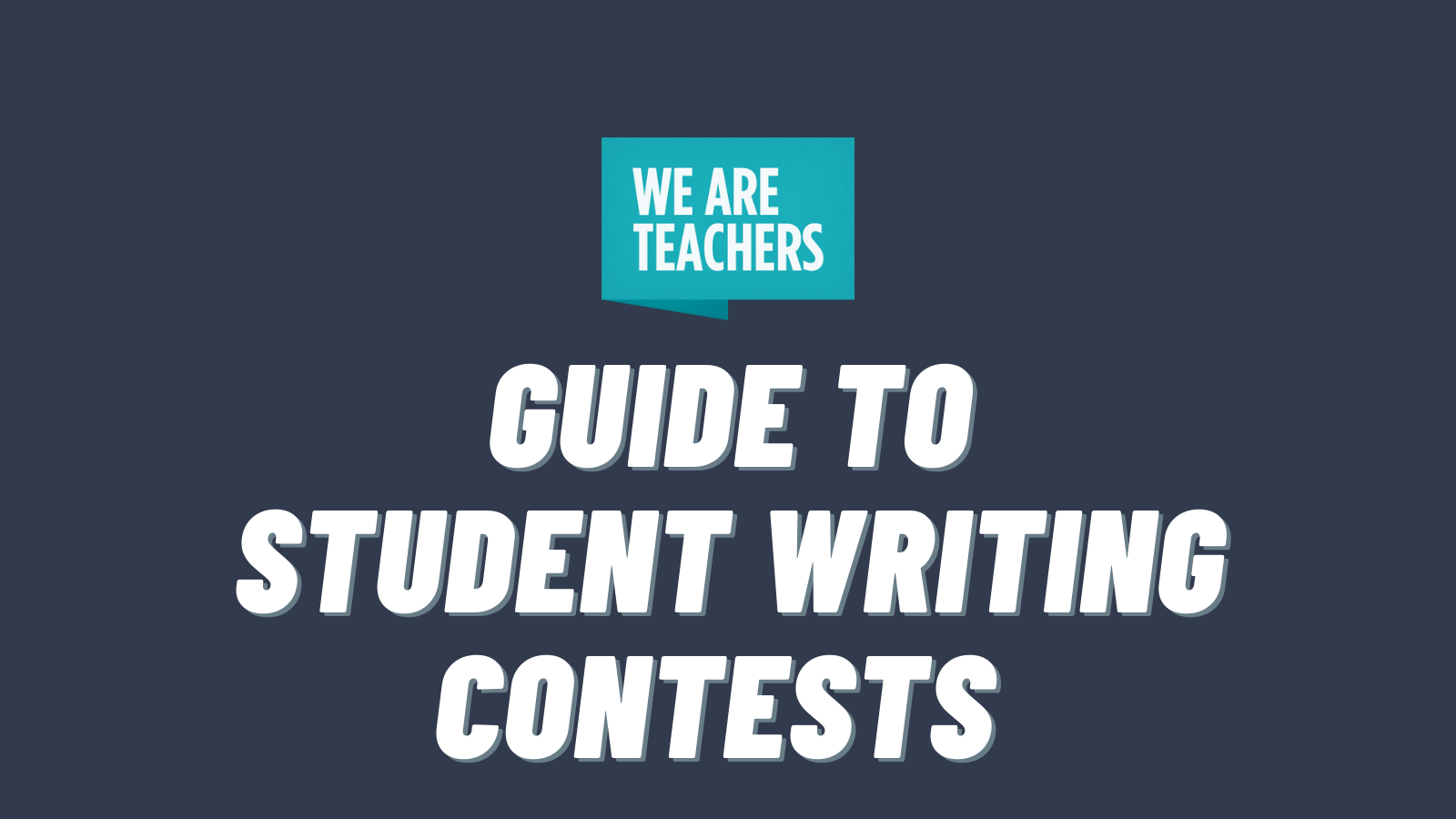
When students write for teachers, it can feel like an assignment. When they write for a real purpose, they are empowered! Student writing contests are a challenging and inspiring way to try writing for an authentic audience— a real panel of judges —and the possibility of prize money or other incentives. We’ve gathered a list of the best student writing contests, and there’s something for everyone. Prepare highly motivated kids in need of an authentic writing mentor, and watch the words flow.
1. The Scholastic Art & Writing Awards
With a wide range of categories—from critical essays to science fiction and fantasy—The Scholastic Awards are a mainstay of student contests. Each category has its own rules and word counts, so be sure to check out the options before you decide which one is best for your students.
How To Enter
Students in grades 7-12, ages 13 and up, may begin submitting work in September by uploading to an online account at Scholastic and connecting to their local region. There are entry fees, but those can be waived for students in need.
2. YoungArts National Arts Competition
This ends soon, but if you have students who are ready to submit, it’s worth it. YoungArts offers a national competition in the categories of creative nonfiction, novel, play or script, poetry, short story, and spoken word. Student winners may receive awards of up to $10,000 as well as the chance to participate in artistic development with leaders in their fields.
YoungArts accepts submissions in each category through October 13. Students submit their work online and pay a $35 fee (there is a fee waiver option).
3. National Youth Foundation Programs
Each year, awards are given for Student Book Scholars, Amazing Women, and the “I Matter” Poetry & Art competition. This is a great chance for kids to express themselves with joy and strength.
The rules, prizes, and deadlines vary, so check out the website for more info.
4. American Foreign Service National High School Essay Contest
If you’re looking to help students take a deep dive into international relations, history, and writing, look no further than this essay contest. Winners receive a voyage with the Semester at Sea program and a trip to Washington, DC.
Students fill out a registration form online, and a teacher or sponsor is required. The deadline to enter is the first week of April.
5. John F. Kennedy Profile in Courage Essay Contest
This annual contest invites students to write about a political official’s act of political courage that occurred after Kennedy’s birth in 1917. The winner receives $10,000, and 16 runners-up also receive a variety of cash prizes.
Students may submit a 700- to 1,000-word essay through January 12. The essay must feature more than five sources and a full bibliography.
6. Bennington Young Writers Awards
Bennington College offers competitions in three categories: poetry (a group of three poems), fiction (a short story or one-act play), and nonfiction (a personal or academic essay). First-place winners receive $500. Grab a poster for your classroom here .
The contest runs from September 1 to November 1. The website links to a student registration form.
7. The Princeton Ten-Minute Play Contest
Looking for student writing contests for budding playwrights? This exclusive competition, which is open only to high school juniors, is judged by the theater faculty of Princeton University. Students submit short plays in an effort to win recognition and cash prizes of up to $500. ( Note: Only open to 11th graders. )
Students submit one 10-page play script online or by mail. The deadline is the end of March. Contest details will be published in early 2024.
8. Princeton University Poetry Contest for High School Students
The Leonard L. Milberg ’53 High School Poetry Prize recognizes outstanding work by student writers in 11th grade. Prizes range from $100 to $500.
Students in 11th grade can submit their poetry. Contest details will be published this fall.
9. The New York Times Tiny Memoir Contest
This contest is also a wonderful writing challenge, and the New York Times includes lots of resources and models for students to be able to do their best work. They’ve even made a classroom poster !
Submissions need to be made electronically by November 1.
10. Nancy Thorp Poetry Contest
The deadline for this contest is the end of October. Sponsored by Hollins University, the Nancy Thorp Poetry Contest awards prizes for the best poems submitted by young women who are sophomores or juniors in high school or preparatory school. Prizes include cash and scholarships. Winners are chosen by students and faculty members in the creative writing program at Hollins.
Students may submit either one or two poems using the online form.
11. The Patricia Grodd Poetry Prize for Young Writers
The Patricia Grodd Poetry Prize for Young Writers is open to high school sophomores and juniors, and the winner receives a full scholarship to a Kenyon Review Young Writers Workshop .
Submissions for the prize are accepted electronically from November 1 through November 30.
12. Jane Austen Society Essay Contest
High school students can win up to $1,000 and publication by entering an essay on a topic specified by the Jane Austen Society related to a Jane Austen novel.
Details for the 2024 contest will be announced in November. Essay length is from six to eight pages, not including works cited.
13. Rattle Young Poets Anthology
Open to students from 15 to 18 years old who are interested in publication and exposure over monetary awards.
Teachers may choose five students for whom to submit up to four poems each on their behalf. The deadline is November 15.
14. The Black River Chapbook Competition
This is a chance for new and emerging writers to gain publication in their own professionally published chapbook, as well as $500 and free copies of the book.
There is an $18 entry fee, and submissions are made online.
15. YouthPlays New Voices
For students under 18, the YouthPlays one-act competition is designed for young writers to create new works for the stage. Winners receive cash awards and publication.
Scroll all the way down their web page for information on the contest, which accepts non-musical plays between 10 and 40 minutes long, submitted electronically. Entries open each year in January.
16. The Ocean Awareness Contest
The 2024 Ocean Awareness Contest, Tell Your Climate Story , encourages students to write their own unique climate story. They are asking for creative expressions of students’ personal experiences, insights, or perceptions about climate change. Students are eligible for a wide range of monetary prizes up to $1,000.
Students from 11 to 18 years old may submit work in the categories of art, creative writing, poetry and spoken word, film, interactive media and multimedia, or music and dance, accompanied by a reflection. The deadline is June 13.
17. EngineerGirl Annual Essay Contest
Each year, EngineerGirl sponsors an essay contest with topics centered on the impact of engineering on the world, and students can win up to $500 in prize money. This contest is a nice bridge between ELA and STEM and great for teachers interested in incorporating an interdisciplinary project into their curriculum. The new contest asks for pieces describing the life cycle of an everyday object. Check out these tips for integrating the content into your classroom .
Students submit their work electronically by February 1. Check out the full list of rules and requirements here .
18. NCTE Student Writing Awards
The National Council of Teachers of English offers several student writing awards, including Achievement Awards in Writing (for 10th- and 11th-grade students), Promising Young Writers (for 8th-grade students), and an award to recognize Excellence in Art and Literary Magazines.
Deadlines range from October 28 to February 15. Check out NCTE.org for more details.
19. See Us, Support Us Art Contest
Children of incarcerated parents can submit artwork, poetry, photos, videos, and more. Submissions are free and the website has a great collection of past winners.
Students can submit their entries via social media or email by October 25.
20. The Adroit Prizes for Poetry & Prose
The Adroit Journal, an education-minded nonprofit publication, awards annual prizes for poetry and prose to exceptional high school and college students. Adroit charges an entry fee but also provides a form for financial assistance.
Sign up at the website for updates for the next round of submissions.
21. National PTA Reflections Awards
The National PTA offers a variety of awards, including one for literature, in their annual Reflections Contest. Students of all ages can submit entries on the specified topic to their local PTA Reflections program. From there, winners move to the local area, state, and national levels. National-level awards include an $800 prize and a trip to the National PTA Convention.
This program requires submitting to PTAs who participate in the program. Check your school’s PTA for their deadlines.
22. World Historian Student Essay Competition
The World Historian Student Essay Competition is an international contest open to students enrolled in grades K–12 in public, private, and parochial schools, as well as those in home-study programs. The $500 prize is based on an essay that addresses one of this year’s two prompts.
Students can submit entries via email or regular mail before May 1.
23. NSHSS Creative Writing Scholarship
The National Society of High School Scholars awards three $2,000 scholarships for both poetry and fiction. They accept poetry, short stories, and graphic novel writing.
Apply online by October 31.
Whether you let your students blog, start a podcast or video channel, or enter student writing contests, giving them an authentic audience for their work is always a powerful classroom choice.
If you like this list of student writing contests and want more articles like it, subscribe to our newsletters to find out when they’re posted!
Plus, check out our favorite anchor charts for teaching writing..
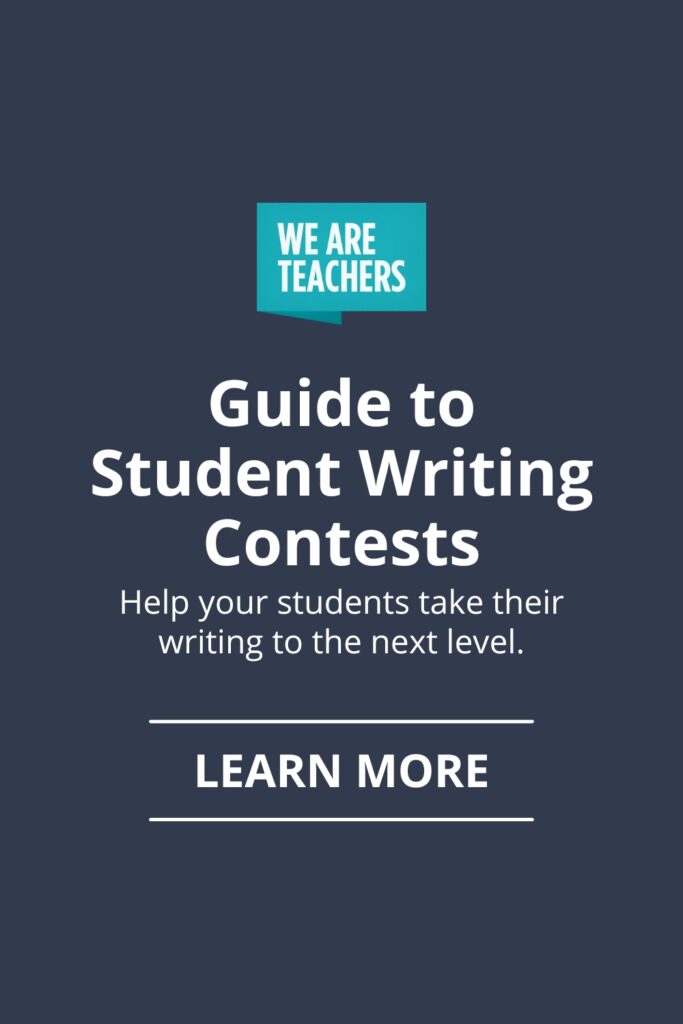
You Might Also Like

Best 2024 Competitions for Students in Grades K-12
Competitions in STEM, ELA and the arts, and more! Continue Reading
Copyright © 2024. All rights reserved. 5335 Gate Parkway, Jacksonville, FL 32256
Nevada Department of Education Nevada Department of Education

How Do I Find…
- Public Meetings
- Reports & Data
- Standards & Instruction
- Federal Relief Funds (ESSER)
- Special Education Dispute Resolution
- NDLC (Nevada Digital Learning Collaborative)
- NV State Improvement Plan (STIP)
- Professional Learning
- 6/3/2024 - Nevada Department of Education Announces Henderson and North Las Vegas as Charter School Authorizers
- 5/9/2024 - State Board of Education Invites Applicants for Charter Authority Board
- 4/22/2024 - Nevada Department of Education Announces 14 Purple Star Schools
- 4/18/2024 - Nevada Department of Education Hosts Inaugural Nevada Reading Week Librarian Conference
- 4/12/2024 - Henderson Special Education Teacher Receives Milken Educator Award
- 4/3/2024 - Nevada Department of Education Holds Town Hall Meetings about Artificial Intelligence

Jhone Ebert

Our mission is to improve student achievement and educator effectiveness by ensuring opportunities, facilitating learning, and promoting excellence.
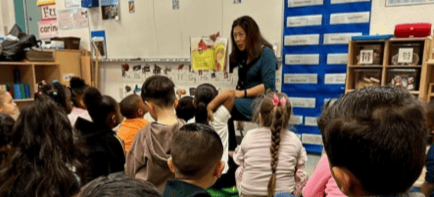
The mission of the Nevada Teacher of the Year program is to celebrate excellence and strengthen the teaching force by honoring and recognizing exceptional teachers on a school, district, state, and national level.

Districts, schools, and communities are served through efficient and effective use of public funds and fulfillment of statutory responsibilities.
NDE Community Engagement
From Our Instagram

International Programs
Anne frank initiative welcomes over 250 clear creek amana eighth graders to university of iowa campus.

On Thursday, May 30, 2024, the Anne Frank Initiative (AFI) , an International Programs affinity group, welcomed 250+ eighth graders from Clear Creek Amana (CCA) Middle School. A strong mission of the AFI is to create outreach opportunities to share Anne Frank’s story, spirit, and her humanitarian message with our youngest generation. Some CCA students have read portions of Anne Frank’s diary during the spring semester. The AFI is directed by Kirsten Kumpf Baele, lecturer in the University of Iowa (UI) Department of German.
“As part of the English Language Arts (ELA) curriculum at CCA, Tollie Lancaster and I were able to teach the students about the Holocaust,” said Lindsay Herr, eighth grade ELA teacher and one of the organizers of the event. “We are honored that Dr. Kirsten Kumpf Baele partnered with us and took the time to teach our students about Anne Frank, and we are excited they were able to meet with and learn from other University of Iowa professors and current University of Iowa students.”
The middle school students began their day with an introduction to Anne Frank, her legacy, and her special connection with Iowa. Throughout the morning, students were divided into breakout sessions which ranged from a virtual reality tour of the Anne Frank House in Amsterdam, and Little Free Library design, to artificial intelligence, writing and identity, and learning about German/Jewish heritage in Iowa City. They also had a tour of the Iowa campus.
At the end the day, students gathered at the Anne Frank sapling on the Pentacrest where Andrew Dahl, the head UI arborist, talked about the white horse chestnut tree, the 13th sapling to be planted in the United States.
“This annual engagement with Clear Creek Amana brings eighth grade students face-to-face with pieces of history that most of them have only encountered through educational texts,” said Mallory Hellman, director of the Iowa Youth Writing Project and AFI advisory committee member. “By visiting the Anne Frank sapling, walking a path of significant locations in Iowa City's Jewish history (and present!), and learning of Anne Frank's Iowan pen-pal , students cement a lived connection between Anne's story and their own.”
The AFI is committed to investigating Anne Frank’s literary contributions, her ongoing legacy, and all that she represents in a more globalized, international, and contemporary context.
“Iowa has a special connection to Anne Frank and her story,” remarked Natoshia Askelson, associate professor in the UI College of Public Health and AFI advisory committee member. “The AFI works to highlight and strengthen that connection. It is vital that Iowans understand how interconnected all our stories and lives are, so that we can prevent violence.”
Organizers of this event included AFI Director Kirsten Kumpf Baele; Lindsay Herr, CCA eighth grade ELA teacher; AFI Advisory Committee members Natoshia Askelson, Carl Follmer, Mallory Hellman, Shereena Honary, and Ana Laura Leyser; and other UI faculty, staff, and students including Andrew Dahl, Glenn Ehrstine, Colleen Kollasch, and Kevin Zihlman.
International Programs (IP) at the University of Iowa (UI) is committed to enriching the global experience of UI students, faculty, staff, and the general public by leading efforts to promote internationally oriented teaching, research, creative work, and community engagement. IP provides support for international students and scholars, administers scholarships and assistance for students who study, intern, or do research abroad, and provides funding opportunities and grant-writing assistance for faculty engaged in international research. IP shares their stories through various media, and by hosting multiple public engagement activities each year.
- Anne Frank Initiative
International Programs at the University of Iowa supports the right of all individuals to live freely and to live in peace. We condemn all acts of violence based on race, religion, gender identity, sexual orientation, and perceived national or cultural origin. In affirming its commitment to human dignity, International Programs strongly upholds the values expressed in the United Nations Universal Declaration of Human Rights .

COMMENTS
The Spache Readability Formula is used to assess the reading level of texts, especially for young readers. It was designed to evaluate reading materials for students in grades 1 to 6. The formula calculates the grade level based on two factors: the number of familiar words and the number of sentences.
In order to build reading skills, your 8th grader: Evaluates the evidence in texts to determine the strongest supports of an idea and analysis. Determines the main idea or theme of a text using evidence from the text to support it. Provides an objective summary of a text. Understands, summarizes, and tracks the progress of the main idea of a ...
According to the National Assessment of Adult Literacy, around 43% of American adults have basic or below-basic literacy skills. Writing at an 8th grade reading level is a proven way to capture every type of reader without bias. It's significant for non-native English speakers, too.
Verbal has a double meaning for eighth grade writing: it refers to the oral presentations the kids will do and to this year's focus on grammar — gerunds, participles, and infinitives.. Argument essays. Written in formal language, argument essays should start with an introduction that clearly presents the writer's position and flows into a well-organized, research-backed argument that ...
Another technique for improving writing in eighth grade is by getting feedback from peers. Students can form small groups and review each other's work. This technique helps them to identify areas that need improvement and provides an opportunity to learn from their peers. They should also provide constructive feedback to their peers.
Keep It Short. Another way to reduce the reading level of your writing is to shorten the length of your sentences. If you have a lot of compound or complex sentences, break them up into several shorter ones. You can also eliminate unnecessary words. For example, "Mentally imagine someone who is playing the game of tennis" could be ...
Apply grade 8 Reading standards to literature (e.g., "Analyze how a modern work of fiction draws on themes, patterns of events, or character types from myths, traditional stories, or religious works such as the Bible, including describing how the material is rendered new"). See related worksheets, workbooks. W.8.9.B.
These fun and interesting 8th-grade writing prompts will inspire older students to write longer and more in-depth work.
This activity is designed to help students learn about writing introductions through a fun bridge building activity to join the lead noun card and thesis statement card. Free, printable ELA Common Core Standards Worksheets for 8th grade writing skills. Use activities in class or home.
Structure and Style for Students: Year 1 Level B Premier Package. Join Andrew Pudewa as he leads students on a 24-week writing journey using IEW's Structure and Style approach. Students reading at a 6th-8th grade level will take delight in Mr. Pudewa's humorous, incremental, and effective writing lessons.
The National Assessment of Educational Progress (NAEP) writing assessment measures how well America's students can write—one of the most important skills that students acquire and develop during K-12 schooling. Since 2011, students participating in NAEP writing assessments have been required to compose and type their responses on a digital ...
New Dale Chall Readability Formula. Using large lists of words that are understood by fourth grade students in the U.S, this metric provides the following scoring. Dale Chall Score. Reading Age. 4.9 or lower. 4th grade student or lower. 5.0-5.9. 5th or 6th grade student. 6.0-6.9.
3. Types of texts: Across the grades, students will read both literature (fiction) and informational texts (non-fiction) and respond using a range of writing types. The chart below illustrates what percent of teaching time will focus on the necessary reading and writing standards at each grade level from Kindergarten through 8 th Grade.
ELA practice and instruction for 8th grade, covering reading comprehension and vocabulary. Aligned to Common Core State Standards for Reading: Literature; Reading: Informational Text; and Vocabulary Acquisition and Use.
Grade Level Resources. Discover ideas and strategies that support literacy learning, specially curated for this grade band. Select Grade. Kindergarten K; 1-2; 3-4; 5-6; 7-8; 9-10; ... With full recognition that writing is an increasingly multifaceted activity, we offer several principles that should guide effective teaching pract.
Keep in mind that readability is not a measure of writing quality and that these heuristics are only estimates of a passages readability. This Readability Analyzer estimates the readability of a passage of text using the Flesch-Kincaid Reading Ease , Gunning Fog Index , Kincaid Grade Level , SMOG formula and Dale-Chall Score and Fry Reading ...
When the word grade is followed by a numeral, always capitalize grade and use a numeral for the grade number. Ordinal Number + Grade. When writing a grade in its ordinal form, use words for Grades 1-9 and numerals for Grades 10, 11, and 12. However, if an ordinal number 10 or above starts a sentence, then use words.
Students reading at a 6th-8th grade level will take delight in Mr. Pudewa's humorous, incremental, and effective writing lessons. The curriculum provides clear daily assignments and includes vocabulary words, literature suggestions, and lesson plans for teachers. ... Take your 4th-6th-grade-students to the next level in their Structure ...
Find out more about Readable's writing style features » ... A Grade Level of 8 or lower is good for text aimed at the public. 85% of the public will be able to read and understand your content at Grade Level 8. Read more about readability scores. Readability Glossary.
Generally, writing for an eighth-grade reading level will make your content easy to absorb and understand by readers. Tip #2: Easy to read and scan For easier understanding by readers and/or ...
On average, high school graduates read at the 9 th -grade level, according to William H. Dubay, readability consultant at Plain Language Services. College graduates at the 12 th -grade level. Over time, reading skills decline. On average, Dubay says, adults read at five grade levels lower than the last grade they completed.
EIW™ Level 8 is a homeschool writing curriculum that features a slow, systematic approach for students aged 13-14 who want to learn how to write well. The step-by-step approach allows students to focus on small, daily assignments, so they don't feel overwhelmed. Includes access to ONLINE Student Book and Teacher Handbook Includes lesson-by ...
8. Princeton University Poetry Contest for High School Students. The Leonard L. Milberg '53 High School Poetry Prize recognizes outstanding work by student writers in 11th grade. Prizes range from $100 to $500. How To Enter. Students in 11th grade can submit their poetry. Contest details will be published this fall. 9.
Plenty of writing studies have been conducted on the genre of argumentative writing in that it has been widely recognized as a task requiring not only relatively high cognitive capabilities but also a certain level of command of academic writing skills (Qin & Uccelli, 2016; Schleppegrell, 2001; Taylor et al., 2019).Academic language skills have been proven to be a strong predictor of academic ...
Welcome to the Nevada Department of Education's (NDE) website! Whether you are an educator looking to renew your license, a parent or family member seeking information about our work on behalf of students, or a constituent following the work of our State Board of Education or other Boards or Commissions, this site will help you find what you need.
Kirsten Kumpf Baele speaking in front of the group of Clear Creek Amana students. On Thursday, May 30, 2024, the Anne Frank Initiative (AFI), an International Programs affinity group, welcomed 250+ eighth graders from Clear Creek Amana (CCA) Middle School.A strong mission of the AFI is to create outreach opportunities to share Anne Frank's story, spirit, and her humanitarian message with our ...